Alameda County Department of Environmental Health

1131 Harbor Bay Parkway, Alameda, CA 94502-6577
(510) 567-6702
When the Unified Program was formed in the mid 90s, it required every county to apply but also allowed interested cities to become either a CUPA or a Participating Agency (PA). ACDEH is the CUPA for the cities of Alameda, Albany, Castro Valley, Dublin, Emeryville, Newark, Oakland, Piedmont, San Lorenzo, Sunol; the unincorporated areas of Fremont, Hayward, Livermore, Pleasanton and San Leandro; and parts of Byron, Mountain House and Tracy. The cities of Fremont, Livermore/Pleasanton, Hayward, Berkeley, Union City and San Leandro have their own CUPA. ACDEH and the six city CUPAs in Alameda County meet monthly to discuss implementation issues and enforcement. Additionally, a Task Force with the District Attorney meets monthly to discuss cases such as illegal disposal that may affect multiple agencies or statewide enforcement cases, provide training and ensure consistency.
In a meeting with ACDEHs Hazardous Materials Division Chief, Aileen Mendoza, details were provided on their programs implementation. ACDEH has a staff of more than 150 with 22 staff in the Hazardous Materials Division which implements the CUPA programs. The inventory consists of more than 2,000 facilities in the CUPA programs. The staff are trained in all program areas and assigned a district to inspect, the inspectors rotate districts periodically. In addition to the CUPA programs, they also implement the Clean Water and Waste Tire programs and have been designated by the Alameda County Health Officer to oversee the cleanup of methamphetamine and/or fentanyl-contaminated properties.
ACDEH promotes a culture of learning, educating business operators and helping them understand the regulatory requirements which lead to increased compliance. This is achieved through focused workshops, one-on-one discussion during inspections and even remotely, where staff and operators can share their computer screens while reviewing or submitting information. ACDEH also provides a computer system in their office where the business can come in and submit or update their information, which is vital for some that do not have access to a computer or need additional assistance. ACDEH staff also helps self-employed businesses who cannot leave their business by going to their facility to assist them in completing their California Environmental Reporting System (CERS) submittal. Education is always the first step but occasionally it takes a little more to compel a business to comply. ACDEH works closely with their County Counsel and District Attorney (DA) and have a robust enforcement program. ACDEH takes active roles in many area and statewide TAGs as well as other technical meetings and advisory groups.
When CERS was introduced and required all information to be submitted digitally, every agency had to change the way they worked and go paperless. ACDEH started using computers in the field to perform inspections. Then in 2016, converted all paper files to electronic files. All this helped during the pandemic because inspectors were already proficient with digital systems and working remotely. ACDEH quickly developed guidance so staff was able to work seamlessly and safely. This is a prime example of ACDEHs knack for innovation and making things better.
CUPA programs are very technical and diverse, ACDEH ensures the education and training of inspectors are extensive and ongoing. The training foundation starts with all new hires attending Cal EPAs Basic Inspector Academy. Although not required, ACDEH ensures staff are certified in Hazardous Waste Operations and Emergency Response or HAZWOPER and annually trained. Regular staff meetings are used to disseminate information from state agencies and various Technical Advisory Groups (TAG). ACDEH also sends its staff to various advanced trainings as well as hosting trainings including those provided by the DA on enforcement, County Counsel on report writing and subpoenas, the California Hazardous Materials Investigators Association (CHMIA) including on hazardous materials investigations, environmental crimes and de-escalation, California Specialized Training Institute, Western States, Steel Tank Institute SP001 Aboveground Tank System and of course, the Annual CUPA Conference all help to keep inspectors in the know. Sounds like a lot of training but that is what it takes to be ready in the CUPA world. There is always something new that comes up like the cannabis industry, lithium batteries, changing regulations, etc. The latest to emerge here in Alameda County are hydrogen fueling stations, part of the hydrogen highway envisioned years ago. There are several fueling sites proposed in existing gas stations all with hydrogen tanks and fueling dispensers. As a highly flammable gas, hydrogen presents a significant hazard and must be handled with the utmost caution, requiring more specific training.
In order to train staff, first you must effectively recruit. In Alameda County, the CUPA presents at local Junior Colleges and Universities and provide information at local events to attract candidates. Inspectors require a unique skill set to succeed in this diverse community. First of all, they must like the work of protecting the environment and the community, because with quality of work comes quality of life. People skills are a necessity along with critical thinking to determine how to engage with operators because not everyone wants to be regulated. Each operator is different so soft skills training is essential. The priority is to make sure staff is safe, so they are trained to assess the area and business then to identify access and egress options. That de-escalation training mentioned previously is invaluable in helping an inspector determine when to leave or continue inspecting. ACDEH has gained a reputation of having an experienced, well rounded, collaborative team of inspectors.
The Alameda County model is unique and a prime example of the flexibility of California's Unified Program, with seven agencies implementing the CUPA programs in a consistent, coordinated and consolidated effort. That does not just happen, it takes hard work and communication. ACDEH is the largest of the seven CUPAs in Alameda County and is constantly working to protect the community in this diverse urban and suburban area. No wonder ACDEH received the CalEPA Secretary's Environmental Achievement Award and Outstanding Certified Unified Program Agency award. So, if you are ever in Alameda County, rest assured that well-trained staff are on the job protecting everyone's health and safety and the environment.
Bakersfield City Fire Department
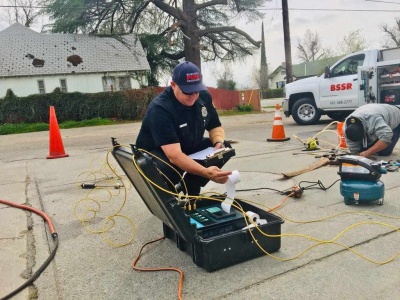
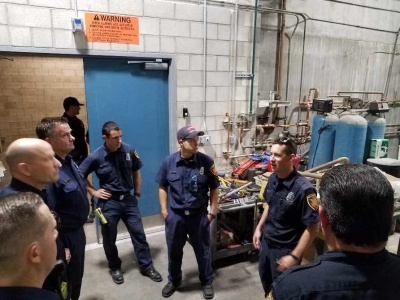

2101 H Street Bakersfield, Ca 93301
661-326-3911
Bakersfield CUPA
Unified Program Agencies come in all sizes, when SB 1082 established the CUPA program in 1994 it required every county and allowed every city to apply to become the Certified Unified Program Agency. There are about 25 cities that elected to become a CUPA and our profile this time highlights the city of Bakersfield which became a CUPA in 1996. Bakersfield is a city in Kern County, California, it is the county seat and largest city of Kern County. The city covers about 151 sq mi. near the southern end of the San Joaquin Valley and the Central Valley region. Bakersfield's population as of the 2020 census was 403,455, making it the 48th-most populous city in the United States of America and the 9th-most populous city in California. Bakersfield is a significant hub for both agriculture and energy production. Kern County is the most productive oil-producing county in California and the fourth-most productive agricultural county in the United States. Industries in and around Bakersfield include natural gas and energy extraction, mining, petroleum refining, distribution, food processing. Bakersfield is located on the Kern River just north of Los Angeles, it has plenty to offer like river rafting, the Buena Vista Museum of History, the California Living Museum which explores the local flora and fauna or the Bakersfield Community Theatre which is the oldest "live" community theater in California. Bakersfield is also called Nashville West and the country music capital of the West coast, it was home to country music legends Buck Owens and Merle Haggard. I had a chance to it down with Peter Armagost to get the latest on the Bakersfield CUPA program.
The CUPA program here is administered by Bakersfield Fire Dept (BFD), BFD has 14 fire stations and 300 firefighters, the CUPA program is part of the Fire Prevention Division and has seven inspectors and one supervisor. They currently regulate about 1600 facilities and implement all six CUPA program elements for the city. The goal of the CUPA program has always been to coordinate, consolidate and make consistent and BFD epitomizes that by combining the annual fire safety inspection with the appropriate CUPA elements, which not only saves staff time but lessens the impact on business, a true win win deal. The inventory here has all the program elements, including 6 Cal ARP sites which handle the most hazardous materials. The Cal ARP facilities here like most of them throughout California are businesses that handle and store ammonia. One added benefit of having the CUPA program in the Fire Prevention Bureau is being able to provide vital information in real time regarding hazardous materials to first responders, when you are dealing with a gas like ammonia, time is of the essence. The information put into the California Environmental Reporting System (CERS) is available to first responders and provides facility maps, chemical inventories and contact information, all critical information for responders.
The pandemic shut down this CUPA for eight weeks, that just means they are still trying to catch up. The BFD CUPA prides itself on helping businesses understand and comply with the sometimes-confusing CUPA regulations. Small business operators often are unaware of the requirements, particularly UST operators, that is why they take the extra time here to help folks understand, including assisting with the required data input that businesses must do to get their facility information into CERS. One of the biggest challenges is often the language barrier, since for many small businesses English is a second language. There are large Indian, Sikh and Hispanic populations here that own businesses, so the customer service they give pays off in the long run with improved compliance, happier business owners and a safer community.
Like every CUPA they do inspections, education and enforcement here in Bakersfield, but they also do a lot more. The CUPA staff are trained to the Hazardous Materials Specialist level and respond to chemical spills and Haz Mat incidents. Typically staff here act as the Technical Reference position since they are more familiar with CERS and can access the facility information like chemical inventories, maps and responsible parties, plus do the chemical analysis like Haz Cat to identify unknowns. Always trying to improve and make responding safer, the BFD embraces innovation, especially if it also can keep responders out of harms way. That is why they are starting to utilize drones here to assist responders, some of the staff are certified drone pilots. The goal is to use drones for a number of tasks, like air sampling, reconnaissance and monitoring. They do not have payload drones just yet, but they do plan on having drones equipped with thermal imaging cameras, air and radiation monitors to help assist responders assess the inherent hazards on any given Haz Mat incident and providing real time data without having to put responders in the hot zone.
The next time you are in the mood for that country music genre known as Bakersfield sound, you will find plenty of it right here in this central California city. If whitewater rafting is more your thing, well they have that too on the Kern River which runs right through the city. As a city CUPA their geographic area is smaller than counties that must cover large unincorporated areas, that just means that they can provide the extra outreach, education and customer service. So make sure you stop in Bakersfield on your next California road trip and rest assured this CUPA is on the job helping industry, understand the requirements and improving compliance to make it a safer community.
Butte County CUPA/Hazardous Materials Program
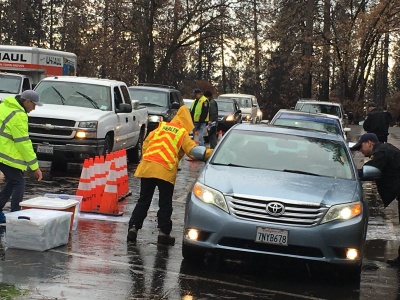
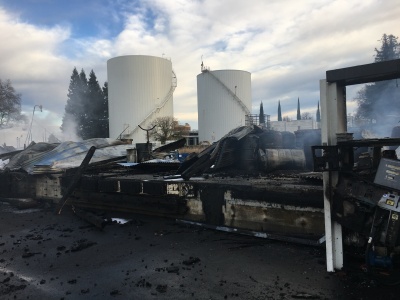

202 Mira Loma Dr., Oroville, CA 95965
1-530-552-3880
Butte County
Our profiles have taken us to every corner of the state and this time went to Butte County, located about 70 miles north of Sacramento. Like every county in the state Butte has their own unique beauty which includes the wildflowers on Table Mountain, the Feather and Sacramento Rivers or Bidwell Park one of the largest municipal parks in the nation. That is why they call it the Land of Natural Beauty. Butte County lies along the western edge of the Sierras making it ideal for the hydroelectric generating plants located here, including one at Orville Dam. The County seat is in Oroville and the largest city is Chico, home of the California State University at Chico, a vibrant college town. With a population just over 200,00 Butte County is not considered a rural county, but it has that feel.I was able to get Thomas Parker, their Hazardous Materials Program Manager, to tell me how the CUPA program works here. Prior to Joining Butte County 16 years ago, Thomas was an Environmental Consultant. The Butte County CUPA program is administered by Butte County Public Health Department, Environmental Health Division (EH). The CUPA program is staffed with five inspectors, one manager and has over 1,200 facilities in their inventory.
Like every CUPA in the state Butte County performs inspections and enforcement but sometimes unexpected events disrupt the process, to say the least that is what happened here in November of 2018. The Camp Fire was the deadliest and most destructive wildfire in California history, taking 86 lives and destroying 20,000 structures, basically destroying the city of Paradise. When disasters like the Camp Fire hit, it is all hands-on deck and there is no such thing as business as usual. The staff in Butte County CUPA were redirected to assist in numerous tasks. The fire destroyed 13,000 homes, each of these properties needed to be cleaned up before any rebuilding could occur. That means that each property had to be evaluated and all hazardous waste removed, Public Health staff did the Right of Entry, outreach, reentry meetings, performed surveys and provided 20,000 reentry kits. The kits contained Tyvek suits, gloves and the protective gear which homeowners would need to return to their property. There were thousands of work plans and final reports to review, which outlined the process and then documented for the debris removal and cleanup. Disasters like this overwhelm local agencies and typically the local staff is better at helping their residents and directing them to resources. Thankfully mutual aid from other counties supplied technical staff to assist with the review and oversight, plus retired directors provided through California Association of Environmental Health Administrators (CAEHA) helped provide other much needed expertise.
There was a lot to do and the CUPA staff was busy helping in any way possible, they staffed the local assistance centers and public outreach meetings that would guide homeowners through this daunting process. Then there was the Phase I emergency response to remove any identifiable household hazardous waste and potential asbestos issues, which EH coordinated through the use of mutual aid staff. There were two ways for homeowners to complete debris removal from their properties; either the state program run by the Office of Emergency Services (OES) or the alternate program where homeowners could use local contractors to complete the work. The Alternate program plans were reviewed by local, extra help, CAEHA and mutual aid staff. There were more than 1,700 workplans and subsequent final reports to review. Homeowners initially thought the Alternate program would be faster but actually once they got rolling the state program was actually faster, since their contractors were more familiar with this type of work and the efficiency of the OES program. It took two years to get the majority of these sites cleaned up.
They finally were starting to return to normal in 2020. In January new staff hired during the Camp Fire began training and then the pandemic hit. In March staff were reassigned as contact tracers or to other tasks. They eventually were working from home catching up on backlogged CERS submittals, Return to Compliance notices and admin work and also resuming UST inspections since those inspections were conducted outdoors. As if the Camp fire and the pandemic were not enough, in September of 2020 the North Complex fire, which started from a lightning strike in Plumas County in August, entered Butte County. The North complex fire burned more than 300,000 acres killed 16 people and destroy 2,500 structures, so EH staff were again redirected to assist with recovery and cleanup.
That means for close to three years the staff here were busy doing everything but their CUPA work, naturally that is when they received their CUPA evaluation from the state agencies. Needless to say, they received an unsatisfactory evaluation but the state acknowledged the impact these natural disasters had on the program. Then in August of 2021 the Dixie Fire started in Butte County but moved into Plumas County, destroying over 1,300 structures. Butte County CUPA assisted Plumas County with setting up data management, ROE collection and the Alternative Program. Additionally, Butte County CUPA assisted with providing various policies/procedures, guidance documents and templates and has generally become a clearing house for these documents and templates with many other counties dealing with wildfire disasters.
They are back on track now and have their five staff, prioritizing inspections and following up on the Cal ARP facilities, tiered permitted sites and RCRA LQGs. They lost 7 gas stations to the fires and, based on the evaluation, updated various UST Policies and Procedures., They are now focused on streamlining field procedures with laptops for writing inspections, providing canned violation descriptions, concise language for violations and Return to Compliance notifications, basically giving staff the resources to be more efficient. They have always relied on outreach and education to help businesses achieve compliance or by assisting with Business Plan submittals, providing customer service but also enforcement such as Red Tags on USTs.
Wildfires in California have become the new normal for many rural counties, Butte County has had more than their share of them. Disasters often bring out the best in us and the CUPA agencies across the state have come to the aid of counties affected by wildfires. The mutual aid process which facilitates deployment of resources from counties to natural disasters helped to provide more than a hundred technical staff, typically CUPA inspectors, to assist with the clean up effort and phase one site assessments. CUPA staff across the state are some of the best trained technical staff and having the ability to have those resources available to assist when disasters occur is invaluable.
Business as usual is a welcome relief here. Butte County is a little known California treasure with natural beauty like Feather Falls and Upper Bidwell park, it is a perfect road trip destination. While you are here, rest assured the dedicated staff of this county are busy protecting the environment and rebuilding to make it better than ever.
Calaveras County CUPA

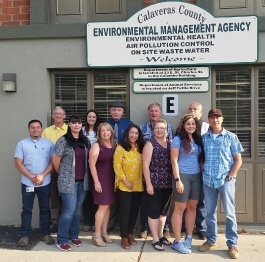

Environmental Management Agency, 891 Mountain Ranch Road, San Andreas, CA 95249
209-754-6399
Calaveras County is located in Northern California just east of Stockton in the foothills of the beautiful Sierras. Although it has a total population of just over 50,000, this rural county’s natural beauty and resources are bigger than life. Calaveras boasts a spectacular scenic byway and Big Trees State Park with Giant Sequoias, truly incredible giants chronicle more than 2000 years of majesty. Steeped in history and folklore, authors such as Mark Twain and Black Bart told of the rough and tumble gold rush era. Today you can relive these yesteryears in the town of Columbia, where you can pan for gold or ride a stage coach. Enjoying its rich history, slower pace and natural beauty are what Calaveras County is all about.
Unified Program Agencies come in all sizes. This time we will find out about life as a smaller rural agency when we hear from Lisa Medina, Environmental Health manager for Calaveras County. Lisa joined Calaveras County in 2016 coming from San Joaquin County, Lisa is well versed in all CUPA and traditional Environmental Health programs with more than 21 years of experience. Calaveras Environmental Management Agency is comprised of several departments namely Environmental Health, On-Site Waste Water, Air Pollution Control, Agriculture Weights and Measures and Animal Control, yes they certainly to do more with less. Calaveras was certified as a Unified Program Agency (UPA) in 2002 and former CUPA and Environmental Health manager Jason Boetzer was named as an Outstanding CUPA individual in 2007.
The challenges for rural UPA’s are much different than their urban counterparts. All Unified agencies have the same regulatory responsibilities but the methods of implementation are as diverse as the State in which we live. Like most rural CUPA’s, Calaveras’ staff members are trained to be proficient in all areas, as many as 15 different programs. This generalist approach requires extensive training and represents a significant investment in each employee. That makes the well-rounded rural inspector a prized commodity explaining why smaller CUPA’s have become the training ground for larger agencies that offer higher salaries. When a rural CUPA loses one person it is a huge loss since the CUPA program may have only two or three staff, so attracting new employees is an ongoing effort. A career as a rural county inspector isn’t for everyone but may be perfect for professionals seeking a quality of life and the natural beauty that come with this job. So, whether you are at the beginning or end of your professional journey always consider rural options.
Large geographically, but with fewer businesses, a challenge looming on the horizon is the requirement for all Single Walled Underground Storage Tanks to be removed by 2025. The high cost of owning and operating UST sites has resulted in fewer retail gas stations. Assisting UST owners in identifying options and a plan of action are a priority for Calaveras EMA. This issue is a major concern for many rural agencies due to the dwindling number of sites able to comply with the mandates and the fact that there is still a critical need for a dependable fuel supply countywide. More on this topic as it gets closer.
The communication between UPA’s and state agencies continues to improve and is critical to the Unified Program’s success and guidance. This type of collaborative communication provided by our state partners is essential for consistency statewide. The Technical Assistance Groups (TAG’s) and regional meetings provide a venue for collaboration and problem solving where CUPA and state staff work together to identify issues and develop solutions. A new and improved CUPA evaluation process is another mechanism for refining the program and gives CUPA’s important feedback on implementation and administration. In the end, the continuing development of this mutually beneficial relationship between CUPA agencies and their state counterparts makes the CUPA program a perfect example of the success that can be achieved when you work together toward a common goal.
Complex and changing regulations makes keeping current on all things CUPA challenging. Thankfully, the resources available have improved and many agencies rely on them now more than ever. Resources like the CUPA Forum and Cal EPA websites, the annual CUPA training conference, participation at regional meetings and Technical Assistance Groups help to provide information and guidance to agencies statewide. Training is a constant need and Calaveras has found the Rural Training Assistance grant, funded by the CUPA Forum Trust, particularly beneficial for training new and seasoned staff. The grant provides classroom and/or field training in all CUPA programs free of charge to rural agencies, check it out at calcupa.org.
Just implementing the Unified Program is quite a challenge which sometimes is impacted by unforeseen circumstances. The County was decimated by the Butte fire in 2015. Large emergencies like wildfires quickly overwhelm local agencies and may impact their programs for months or years. The fire lasted weeks but the recovery and clean up has lasted years and Calaveras EMA had multiple roles. That makes the CUPA Forums efforts on mutual aid to assist in the support and recovery increasingly important as wildfires and earthquakes are not going away.
The Calaveras EMA is a shining example of the many small rural agencies that must combine multiple disciplines from Environmental Health, CUPA and Air Pollution Control in order to maximize their efforts to do more with less. Past, present and future ability to successfully administer a myriad of programs and respond and endure natural disasters is why Lisa dubbed Calaveras “The Little CUPA that Could”.
Colusa County has those Amber Waves of Grain

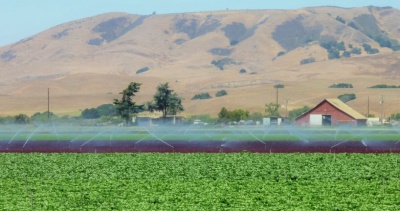

1213 Market Street Colusa, CA 95932
(530) 458-0480
I am always impressed with rural counties and the way they overcome the challenge of implementing numerous regulatory programs with limited staff and resources. Colusa County has a population of just under 22,000 living in 1,150 square miles, the city of Colusa is the largest city with 5,000 residents. The Colusa CUPA is administered by County Environmental Health Division a part of the Countys Development Services Department, in addition to the six Unified Program elements they also do all the traditional Health programs from retail food safety, land use, pools and spas, vector control, water wells, small water systems, cottage food operations and more.
I was able to get Kuljeet Mundi, the Environmental Manager, to tell me how they get it done in Colusa County. The CUPA program here has an inventory that includes 328 business plan sites, 139 hazardous waste generators, 56 Aboveground Petroleum Storage Act (APSA) sites mostly at the many farms, 19 Underground Storage Tank (UST) sites and 9 California (CAL) Accidental Release Prevention (ARP) facilities, which handle acutely hazardous materials. The Cal ARP sites are for anhydrous ammonia, fertilizer storage and processing. They have one staff person to do all of the CUPA inspections although Kuljeet lends a hand when needed. All the staff are Registered Environmental Health Specialists (REHS), so they can do any of the other program inspections when needed like food, land use etc. They are proud of their efficient and friendly customer service and stress education and outreach to help operators comply. When you work in such a close-knit community where everyone knows each other this education and customer first approach helps them get compliance, they have attained and maintain a very high level of compliance. The staff try to get to the operators perspective helping them understand the requirements stressing why it is important to comply. They understand that it is sometimes difficult to get contractors to come out on time for the certification or for waste disposal, so in some cases they can give extensions or provide additional resources for the operators. They do have some temporary Household Hazardous Waste events for homeowners and for small quantity generators which helps operators reduce disposal costs while also reducing illegal disposal. They have conducted workshops for operators on the use of CERS and have a dedicated computer in their office for businesses to access CERS. They still do mostly paper inspections and then input the data directly into CERS. The legalization of cannabis has resulted in two indoor growing operations and two carbon dioxide extraction operations. Their most recent Evaluation by the State agencies found only one deficiency and not only are they able to adhere to the mandated inspection frequency, but they are also actually six months ahead in inspections, truly amazing.
Whenever you are dealing with hazardous materials inevitably emergency response comes up. Colusa County has Interstate 5, a major transportation route, running right through it, semi-trucks moving every type of commodity use this route 24 hours a day seven days a week. Colusa has limited ability to respond to emergencies and relies on neighboring counties like Yuba and Yolo when needed. That is a common theme when you talk to any of the rural county staff, it is called the Certified Unified Program Agency (CUPA) and no one is more unified than the rural counties. They are always there to help their neighbors whether it is with emergency response, Cal ARP or just forms or administration, it is universal rural folks helping each other get the job done. The regular Technical Assistance Groups (TAG) meet regionally to discuss program admin and emerging issues, the networking that takes place helps all agencies, especially rural ones, while improving consistency statewide.
Colusa County CUPA is a prime example of exemplary implementation of the Unified Program, making their community a safer place to live and work. The annual CUPA Conference is where they can get not only the required CUPA training but can also get the continuing education for their REHS certification. Like many smaller agencies they can struggle with staffing, losing trained staff to larger jurisdictions that pay more is common. The Unified Program provides an interesting and challenging career for staff, especially in these smaller rural areas where staff do all of the CUPA elements plus those traditional Environmental programs.
Colusa County plays a vital role in providing a wide variety of produce to feed California and is a major producer of the seeds that are needed to keep feeding future generations. It takes a unique skill set to implement the numerous regulatory programs required of counties with the limited resources available in rural counties and Colusa does an outstanding job. So, the next time you are driving on Interstate 5 take a little detour to sense the vibe here and rest assured that the Staff of this CUPA is busy keeping it safe one inspection at a time.
Contra Costa County Health Services Department
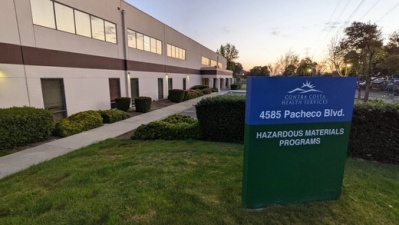
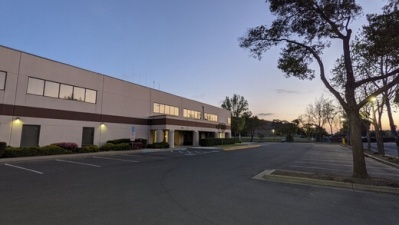

4585 Pacheco Blvd., Suite 100, Martinez, CA 94553
925-655-3200
Contra Costa is one of the nine San Francisco Bay area counties. Home to just over one million residents, Contra Costa has many communities located in the rolling hills along the San Francisco and San Pablo Bays. Martinez is the county seat with diverse communities including Richmond, Walnut Creek, Concord, Hercules and San Pablo to name just a few. There is plenty of open space here with the East Bay Regional Park boasting more than 120,000 acres of recreational opportunities. It also has it’s share of industry with 3800 facilities and 40 Cal ARP sites that include four refineries. Industries chose the area because of the access to water, rail, ground transportation and open space, but the workers needed to live nearby and soon the communities started to grow.
The Contra Costa CUPA has a staff of 35 which includes the inspection staff and administration. The interface between the ever-expanding suburbs and industry is a challenge for every CUPA but in the densely populated Bay Area it presents challenges for inspectors, responders, residents, health officials and more. The regulation of heavy industry and refineries requires adequate technical support and Contra Costa has that with 6 engineers on staff. Randy has been with the county for 29 years so he has seen how it has changed. In the 1980’s and 1990’s there were a number of chemical related incidents like the oleum release in 1993 where 20,000 residents sought medical attention, Randy remembered it vividly. It was incidents like that or the now rare flaring events and refinery fires that prompted the county to take steps to improve industry safety. The County demonstrated their commitment to protecting the community and industry workers in 1998, that is when their Board of Supervisors adopted an Industrial Safety Ordinance (ISO). The requirements of the ISO, aimed to prevent chemical accidents, are some of the most stringent in the United States, if not the world. The goal is for facilities to implement safety programs, instill a safety culture and management systems that prevents incidents that could have detrimental impacts to the surrounding communities. The success of the implementation of the Industrial Safety Ordinance has been recognized by the United State Chemical Safety and Hazard Investigation Board, by Congress with presentation to two Senate subcommittees, and California adopted regulations for petroleum refineries that used the Industrial Safety Ordinance as the model. Another tool that helps protect everyone is the Community Warning System, the system alerts residents in the event of a chemical release and is now used for all emergencies and has helped improve community awareness and safety.
All of the work they have done has paid off essentially because industry does not want accidents either, so working together they have improved compliance. That is a good thing since this CUPA does it all and is the primary response agency for all haz mat emergency response calls in the county. They have 18 haz mat specialist trained team members with 6 members on call 24/7. Randy knows that work the CUPA’s are doing has helped reduce the number of emergency response calls significantly.
Randy has also seen how the CUPA’s have all worked together, improving coordination with Cal EPA, Cal/OSHA and Air Quality, identifying and resolving training issues, providing training guidance and assisting each other with those unique high hazard facilities. Randy was the Forum’s Cal Arp coordinator and was always there to assist large and small counties with training, technical support, inspections and was part of the Refinery Task Force which is ongoing. Randy also lent his expertise to the APSA program helping to develop the now mandatory 24-hour APSA training, this training significantly improved consistency in the delivery of the APSA program statewide.
As a longtime CUPA manager and board member Randy appreciates the changes that have occurred over the years and he has worked hard to make them happen. The CUPA Forum and the CUPA conference have increased networking helping to unify local agencies, providing a common voice. The AEO process has improved and streamlined enforcement and has helped to validate the work inspectors do daily across the state. The CUPA evaluation process has been a work in progress and should be more of a learning process for both the local agency and state evaluators. It is hard for state agencies to come in and evaluate local programs that all have different issues, staffing and demographics but with continued collaboration and feedback we can improve the process. The other big change is the introduction of CERS, which is a good idea and is a helpful tool which has reduced much of the paperwork. One of the repercussions is now staff spend more of their time on the computer, which means less field time. CERS along with files being assessable electronically has improved inspection efficiency. It has been a learning curve that continues using CERS to assist our inspection efficiency. This data is necessary so it was a tradeoff until staff became comfortable with paperless inspections, getting the data into CERS efficiently and making improvements over time.
So if you ever have a chance to visit Contra Costa County you can rest assured that everyone is working to keep this community safe. It is because of the dedicated Contra Costa County’s CUPA staff and the partnership with other CUPAs through the CUPA Forum and the dedicated staff of CUPA’s around the state that are often unseen but always vigilant protectors of people and the environment.
Del Norte County CUPA
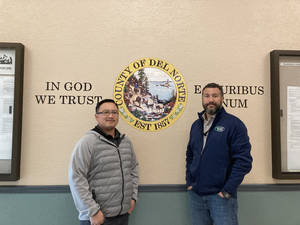
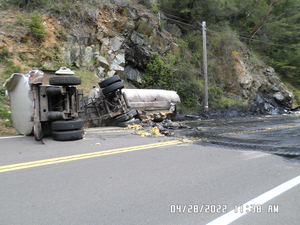

981 H Street, Suite 110, Crescent City, Ca. 95531
1-707-465-0426
Our Profiles have taken us all over California from urban to rural areas each with their own distinct beauty, Del Norte County is our featured CUPA this time. Located in the far northwest corner of the Golden State right on the Oregon border it is not on a major transit route or easy to get to. The County seat and only incorporated city is Crescent City. Home to the giant redwoods, pristine rivers and a picturesque yet incredibly rugged Pacific coastline Del Norte is a well-kept secluded gem. There is not a lot of level ground in this county, it is mostly dominated by the Coastal Range and Klamath mountains with elevations from sea level to over 6,000 feet. Founded by Portuguese settlers and pronounced Del Nort, the county was established in 1857.
Every rural county has to cover large geographical areas while implementing more than two dozen programs from the CUPA elements, land use, food safety, solid waste mitigation, domestic and agricultural wells, animal bites, disease control, and many more. All with limited staffing, that is exactly what Del Norte Environmental Health does for their community. The Del Norte CUPA program is administered by Their Environmental Health Division. I was able to catch up with Director Houawa Moua, and Specialist Branden Hendrix, which is basically the entire staff here, to get the low down on their CUPA program.
The staff have just over 1000 square miles to cover while serving 144 CUPA facilities consisting of 11 UST sites about 3 dozen APSA sites, 45 Haz Waste facilities and one lone ammonia CalARP facility located on Citizens dock, where merchant vessels ice their catch of the day, with the remaining being HAZ Mat Business Plan facilities. The dynamics of the rural CUPA agencies is always unique, with the inventory spread out over the county and with the lowest fees in the state they need to do a lot more with less. To put it in perspective an urban CUPA may have the same number of sites in 5 square miles, so they do more driving here too, at least there is less traffic with under 3 people per square mile. The changing requirements and the online submission process can be a challenge for a small business trying to survive especially with the pandemic, economic downturn or when natural disasters like tsunamis, drought, or wildfires are thrown in. The inventory is mostly mom and pop businesses making education and relationships the best resource to help designated operators comply with the always changing CUPA program regulation, statues, and laws. In a sparsely populated county like this you may be inspecting your neighbor, so a proactive approach of outreach and education is always most effective.
Houawa and Branden are also trained to the Hazardous Materials Specialist level, which is the highest state certified program for first responders to Haz Mat emergencies. They do not have many calls but when needed they are trained and ready. Incidents may involve Butane Honey Oil (BHO) labs where they use flammable solvents to extract the THC. Those are usually discovered when they catch on fire, go figure. A more common response involves transportation of hazardous materials, like fuel tankers and other transit. Not long ago they had a trucker lose 3500 gallons of asphalt into the Smith River, the main water supply for the area, an extensive cleanup and oversight was required to bring the river back to its normal pristine state. As a remote rural county, resources and funding are always an issue and when a large event happens assistance from nearby agencies is often needed. Del Norte relies on the help, via mutual aid, of Humboldt Bay Fire when needed with a Haz Mat incident. When a large cleanup is required like the Asphalt spill, if there is a responsible party then they pay otherwise state agencies are called upon to assist. A more unique occurrence is the occasional shipwreck that washes up somewhere on the 31 miles of rugged coastline. The resulting fuel and oil need to be removed along with any other hazardous materials before entering the ocean. While dealing with the mitigation there are also the entrepreneurial salvage seekers, shipwrecks can be claimed and salvage rights obtained by individuals that want to pull valuable equipment like the GPS or radar. Ships have been wrecking and washing up here for hundreds of years and the most significant was the Brother Jonathon which hit an uncharted rock in 1850. 225 passengers were lost with only 19 survivors in one of the deadliest shipwrecks on the Pacific coast. To commemorate this tragedy, they established Brother Jonathan Park located on the edge of town near the Battery Point Light House.
The Del Norte county Environmental Health like every rural CUPA implement all the traditional Environment Health programs including; food inspections, well construction, septic design, landfills, and the environment. Some non-traditional programs Branden and Houawa manage rabies, superfund sites, tobacco retail licenses, razor clam and mussel quarantines, which means they are required to be Registered Environmental Health Specialists. This is a state certified program that requires a Bachelors degree in a field of Science, work experience training, passing a gruesome state administered exam, continue their education yearly through classes, and refresher trainings. Then there is the CUPA program with its own UST certification requirements, and education while also trying to keep up with constant changes to the Haz Waste, Haz Mat and APSA tank laws and regulations. Add to all that initial and ongoing training for the Haz Mat Specialists and the annual demonstration of proficiency. Just thinking about all that stuff to keep up with will give you an ice cream headache. Like many agencies throughout California this CUPA relies on the annual CUPA conference for much of it, but no matter how you slice it that is a lot of training and a huge span of responsibility from food safety, Petroleum tank compliance, to emergency response 24/7. That is why working in a rural agency is so challenging. You never know what might happen on any given day, making it an interesting and rewarding career for the staff up here in the Pacific Northwest.
The Del Norte CUPA is a perfect example of what small rural CUPA agencies do across the state. These agencies have numerous mandated regulatory programs to administer and it is truly amazing what they can accomplish in spite of limited resources and funding. So if you are ever on a road trip in northern California and want to check out Californias Pacific Northwest, take some time and travel the road less travelled through Del Norte County. Thank you Del Norte CUPA staff
El Dorado County CUPA
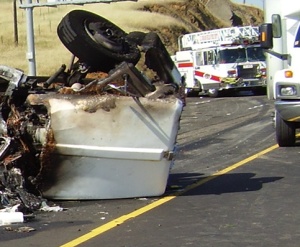

2850 Fairlane Court, Building C, Placerville, CA 95667
530-621-7665
Stretching from Folsom Lake to the Nevada border, our profile this time takes us to El Dorado County. One of Californias original 27 counties, El Dorado was the where the Gold Rush of 1848 started when a lumberjack found gold in Coloma. El Dorado County encompasses 1,786 square miles that range from the eastern edge of the Sacramento Valley to the peaks of the Sierra-Nevadas. The western border is only 20 minutes away from over one million acres of breathtaking national forest and the eastern border is home to Lake Tahoe, which averages almost 15 million visitors a year. Not just rustic mining towns and historic sites, today El Dorado County is a year-round vacation destination overflowing with outdoor adventure. World-class snow skiing, hiking, water sports, fishing, and camping are a constant draw. The county is also home to top-notch wineries, breweries, restaurants, and music festivals.
I was able to sit down with the leadership team for the CUPA Program, Environmental Manager Mark Moss and Program Supervisor Aron Faria. They were able to fill me in on how its done here. The CUPA program is administered by the El Dorado County Environmental Management Department (EDC EMD), and they currently have one manager, one supervisor, two full-time inspectors and one part time inspector to serve around 1000 regulated facilities while implementing all six CUPA program elements countywide. The geographic area is large, with dramatic changes in terrain and some severe weather that offer challenges to normal day-to-day operations. While performing the normal operations of a CUPA, the EDC EMD stresses outreach and education in an attempt to keep regulated facilities in compliance, but sometimes progressive methods of enforcement may be utilized to ensure compliance.
Our CUPA agencies are as diverse as the California landscape. Large agencies tend to have dedicated staff, but many smaller agencies need staff to fill any number of assignments, and that is definitely the case in El Dorado County. In addition to routine inspections, complaints, and outreach, the staff here are also fully trained emergency responders that may be called out to any number of situations: a butane honey-oil lab, fentanyl exposure, a tanker rollover, unknown abandoned containers, miscellaneous chemical spills, or to provide assistance to other county agencies. The El Dorado County CUPA also staffs the county-run Household Hazardous Waste Program. With all of those roles to fill, resources can get fairly thin in a short amount of time. The El Dorado Environmental Management Department has risen to the challenge doing what they need to do to keep the CUPA program up and running while simultaneously helping the public with any issue that might come up.
The El Dorado CUPA is a shining example of what local agencies can do when called upon. In 2006 it was the Angora Fire, then in August of 2021 the Caldor fire started and grew exponentially within days. It began in the Grizzly Flat and Somerset areas, then it crossed Echo Summit, made its way into the South Lake Tahoe basin, and forced major evacuations. The Caldor Fire was not fully contained until October 21, 2021. In its wake, the Caldor fire left more than 1000 structures destroyed, burned 221,000 acres, and cost more than a billion dollars. The impact the Caldor fire will be felt by this county for many years. During the fire the staff at EDC EMD were all reassigned to anywhere they could help their residents by providing needed information, resources, navigating residents through the recovery process, and a lot more. Once the fire was contained the recovery process began. The El Dorado County CUPA staff helped DTSC and CalEPA with the Phase I assessments of parcels, approved work plans and oversaw the implementation of the Caldor Fire Alternative Fire Debris Cleanup Program, and provided essential information and resources to the county residents. Now a year later, the El Dorado County CUPA is still dealing with the cleanup efforts. That is part of the deal with local agencies; whether it is an earthquake, flood, pandemic or wildfire, local staff are redeployed to other tasks ranging from contact tracing, assessing contamination, providing outreach, or responding to emergencies.
Needless to say, the CUPA program was impacted immediately after the fire. Due to the response from the emergency declaration they were only able to handle complaints, emergency response, and some needed UST program oversight. The pandemic had already made them alter the way they conducted business, so a wildfire only added to further transformations. It is inevitable that natural disasters and public health emergencies change everything. Thankfully local agencies like this one are extremely resilient. El Dorado County is getting closer to normal every day and continues to strive to do the best for the county and their residents.
Fresno County - HazMat Compliance - The Designated CUPA
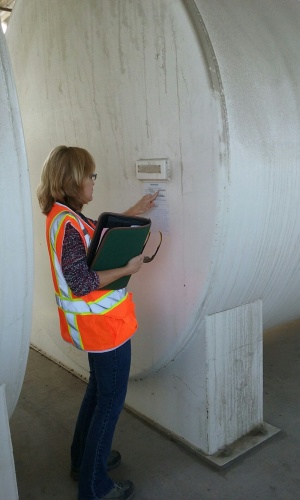
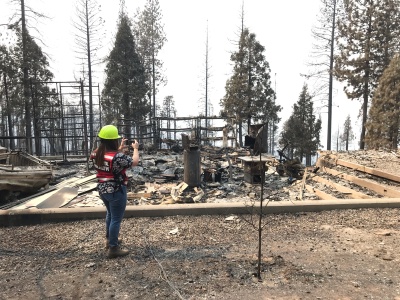

1221 Fulton Street, Fresno, CA 93721
1-559-600-3271
Our CUPA profiles have taken us to every part of California from San Diego in the south to Modoc in the far north, each of them unique in their own way. Our profile this time takes us to Fresno County which was founded in 1856 and is in the heart of the San Joaquin valley. Fresno is consistently the most productive agricultural county in California. The county has 1.88 million acres of the most productive farmland in the world with the top agricultural products being almonds, grapes, pistachios, and dairy, those are just a few of the items grown there since Fresno has more than 350 different crops and turns out more than 8 billion dollars in agricultural products annually. Fresno has more than just agriculture though with the Giant Sequoias and Kings Canyon National Parks, dozens of lakes, and rivers and two national forests, Fresno has more than its share of natural beauty.
In order to get the full scoop on the Fresno CUPA I was able to track down Vince Mendes, a Fresno native and an old friend. Vince is the CUPA manager and has been with Environmental Health for 33 years. Fresno Environmental Health has a staff of 70 and implements all the traditional EH programs from food, dairy, recreational health, organized camps, solid waste, animal control and of course the CUPA program. The Fresno CUPA was certified in 1996 and Vince has been there since the beginning. They currently have a staff of 12 with 2 supervisors and are the CUPA for the entire county, implementing all the CUPA program elements.
Each CUPA has their own challenges and Fresno is no different with over one hundred and sixty Cal ARP sites. While many areas have seen a reduction in Cal ARP Facilities the Ag community in Fresno relies on the cold storage and other ammonia dependent facilities, there are one hundred Cal Arp ammonia sites alone. To support their local business partners, the Fresno CUPA hosts workshops, training and provides outreach to help operators understand and comply with these complex regulations. Staff has developed a rapport with their business partners and use the inspection process as an educational opportunity to facilitate compliance, which is a mutually beneficial because the inspection staff are constantly learning from industry and vice versa. Industry staff are also partners in the annual Ammonia Safety Day, hosted by Fresno and Kern counties, an event that helps all operators. This has significantly reduced the number of releases from Cal ARP facilities making them safer, this CUPA should know since they also respond to Haz Mat emergency response calls, education solves a lot of problems. In addition to providing training for Cal ARP facilities Fresno also provides training for hazardous waste generators with either half day or full day training to help industry comply.
To keep staff trained on the latest changes, like most CUPAs they rely on the annual CUPA conference. In response to the pandemic the conference has been conducted virtually the past two years, but it is still the best training around. One of the things Vince likes about the CUPA program is that CUPAs are always helping other CUPAs and Vince and his staff are regular contributors to the conference, sharing their knowledge and experience. Everyone wants the conference live but that is not possible right now, having more online training throughout the year would help since the CUPA program is constantly changing. Fresno has their own in-house training for new staff each month, staff are trained in all programs from food to CUPA, Fresno is also an Administering Agency for REHS training helping staff become competent in all programs. All CUPAs were not created equally and what works in LA or San Diego may not work in smaller or more rural or geographically different areas. Fresno is by no means small with a current population of one million and 4000 facilities in their Unified Program inventory, but they are unique. Fresno is a large county covering 6000 square miles with 25% of the population below the poverty level and 44% with English as a second language, it is demographically a very diverse county. Fresno works with all businesses to comply and encourages them to reduce the number of hazardous materials stored or to use contractors to perform applications rather than storing chemicals on site also working with the growers to reduce drift from applications and exposure to ag workers, all of this to build a healthier community.
Like everyone the worldwide pandemic changed everything with staff working remotely or being reassigned as a contact tracer or liaison, compounding that was the Creek Fire which burned for a month and drained more of their resources for the clean-up and recovery. Staff worked remotely throughout the pandemic, using tablets connected the staff, in turn staff became more proficient and comfortable using the tablets, conducting inspections, and transferring data.
In the end as Vince says we all drink from the same cup and live in the same community. Their approach of focusing on outreach and education has improved compliance, helping business comply is this CUPAs mission, that's why so many of them say thanks you. Business friendly but not blind the Fresno CUPA is tough when they need to be following up on non-compliant facilities, but enforcement is not always the answer. Stressing education providing resources and making sure that once they inspect a facility it will be safe for the next 1000 days is important because that is when theyll be back to inspect typically, that is Vince's 1000-day rule. Building a stronger, healthier, and more environmentally compliant community takes time, commitment, and dedicated staff and that is what you will find in Fresno. So the next time you are driving down Interstate 99 stop in Fresno and take in some of what it has to offer, you will not be disappointed.
Glenn County - CUPA is in the Air

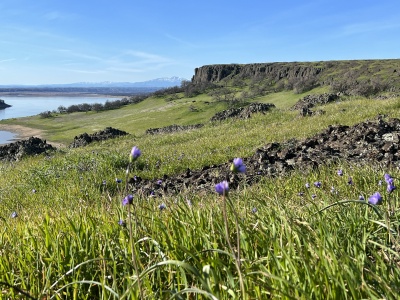

720 N. Colusa St, Willows, CA 95988
(530) 934-6500
CUPA is in the Air in Glenn County
Located in the northwest corner of the Sacramento Valley, Glenn County is our feature CUPA. Primarily an agricultural County with major crops consisting of rice, almonds, walnuts, dairy products, and much more, Glenn County is home to around 1200 farms. There is a lot more than farms in this county though, you can fish or float on the Sacramento River, kick back on Black Butte or Stony Gorge lakes, take in the natural beauty at the Sacramento Wildlife Refuge, and the curious can learn more about the County at the Willows Museum. Then there is always the Thunder Hill Raceway for those that want to pick up the pace. Glenn County has a population of just under 29,000 residents, covers 1,300 square miles and Willows is the County seat.To find out about the CUPA program here I was able to catch up with Alyssa Cordova, an Environmental Program Manager with the Glenn County Air Pollution Control District. It always amazes me how the rural counties do so much with limited staffing, like the CUPA Director in this northern county is also the Agricultural Commissioner, Sealer of Weights and Measures, and Air Pollution Control Officer, overseeing roughly 34 programs. Glenn County is the only Air pollution Control District in the state that is a CUPA, the Glenn County staff do more with less. Their CUPA program has three inspectors that split their time between the CUPA program and Air Pollution District, there is an Environmental Program Manager, an aid and one admin staff to implement the CUPA program for the entire county. The regulated facilities here include roughly 415 farms, 270 businesses, and 18 Underground Storage Tank facilities, that span across all regulatory programs including a few Cal ARP sites for ammonia and paraquat. As their main facility type, farms typically have aboveground petroleum storage, chemical storage such as pesticides, and often generate small amounts of hazardous waste which subject them to the CUPA regulatory programs in addition to various other state and federal regulations. Understanding that compliance with all these regulations can often be burdensome for farms, especially when they are small, Glenn County CUPA takes pride in aiding farmers to effectively gain and maintain compliance. This is achievable in part because the Air Pollution District/CUPA is conveniently housed in the Agriculture Department making it easier for the farms to take care of all their permit renewals and compliance needs. Another way this CUPA excels in efficiency is with the Underground Storage Tank (UST) program where they can conduct CUPA and vapor recovery inspections. The ability for this CUPA to be efficient with regulation highlights the goal of the Unified Program which is to lessen the impact on operators and regulate effectively. The County Planning Department is another local agency that works with the CUPA and will often notify them when there is a new business in the County. Fostering communication with other County agencies is important to this CUPA because working together is important when resources are scarce.
Like all Unified Programs, the Glenn County staff rely on education and outreach to help operators comply; after all compliance is the goal. In addition to farms, they also provide assistance to businesses with reporting and updating information in CERS in addition to providing resources on proper material handling and reporting requirements. A business-friendly approach gets the job done in the rural communities and the staff here have a good relationship with local farmers and businesses.
Preparing inspectors to do both the Air Pollution programs and the six CUPA program elements is no easy task and requires a lot of training, the CUPA program itself with the hazardous waste, UST and Cal ARP elements is complicated enough. Staff are able get most of their training at the annual CUPA conference and when needed they get support from their neighboring Counties, Yuba, Tehama, and Butte. Emergency response is another issue in rural counties, hazardous material response requires special skills. Glenn County can get assistance from Yuba and Butte counties via mutual aid when they need it. The staff here fill the Tech Ref position as the subject matter experts on calls where mutual aid response is not needed. Although rare accidents do occur, whether it is a chemical reaction at the transfer station or a rolled over tanker, so it is good to have that help nearby. It demonstrates how the rural counties are always there to help each other and are involved, connected and ready for the unique situations that can, and do happen. Anticipating and being prepared by assessing local operations can help but there are some areas of concern. Rural counties like Glenn often rely on volunteer firefighters in many areas; the city of Willows has the only paid fire department here. When communities rely on volunteer firefighters, responders can be overwhelmed. A high-volume hazardous materials transloading operation from railcars into tank trucks may not be a concern until a release happens and a large release can be an environmental disaster, especially if it happens near the Sacramento River which runs through this county. That is why it is important to work with operators to ensure they are prepared to handle their own spill and have adequate resources and training to contain the material, at least until the first responders arrive. Haz Mat emergency response always takes time and is even slower in rural areas, so preparedness is critical.
Well trained staff is a valuable asset and retaining them can be challenging, smaller counties can become the training ground for urban agencies that pay more. The Glenn County CUPA has been stable though and relies on local talent, Chico State has provided a majority of the staff here. It does help that a career as a CUPA inspector is technically challenging, diverse, pays well and helps make communities safer. Educating operators and working with the community to implement a complex regulatory program can be a rewarding challenge. Outreach and education mean inspectors must have the people skills to connect with a unique and changing universe of operators and the staff here has what it takes. The next time you are headed down through the Sacramento Valley rest assured the staff of the Glenn County Air Pollution Control Districts CUPA are on the job helping to make communities safer one inspection at a time.
Kern County Public Health: Environmental Health Division
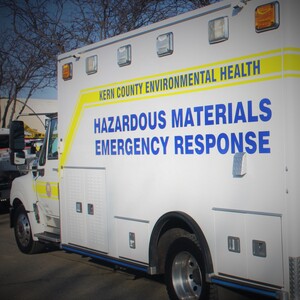


2700 M St. Bakersfield CA 93301
661-862-8740
Kern County is the third largest county in California located just north of Los Angeles and spanning the southern end of the Central Valley. The Countys population is just over 900,000 and covers more than 8,000 square miles with a diverse geography that includes the Tehachapi mountains sporting peaks of more than 8,000 feet, the southern part of Antelope Valley and even a portion of the Mojave Desert. Kern County has a thriving agriculture industry and is Californias top oil producing county. Multiple cities can be found in Kern County including the largest city of Bakersfield. Kern County is also home to two large military establishments. These include China Lake Naval Air Weapons Station and Edwards Air Force Base.
Kern County has two UPA agencies. The City of Bakersfield is overseen by the Bakersfield Fire Department and Kern County Environmental Health oversees all other areas in the County. Kern County Environmental Health has 59 staff with 11 of them in the UPA overseeing 3,500 facilities with Business Plans, 1,800 hazardous waste generators, more than 1,000 APSA facilities and 290 UST sites. Kern County also has 172 CalARP facilities, which are overseen by five (5) additional staff who also inspect solid waste and medical waste facilities.
When Kern County UPA staff conduct inspections they emphasis on education by helping business owners understand State and Federal requirements and the importance of staying in compliance. The Kern County UPA has also implemented a risk-based inspection program for all UPA facilities. Based on chemical hazards and volumes, UPA facilities may be placed in a tier that would include more frequent inspections. As an incentive to be in compliance with State and Federal Regulations, Kern County UPA has also developed a unique program called the Performance Incentive Program (PIP). If a facility meets certain conditions in PIP, then they may be eligible to reduce their inspection frequency, which can also reduce their permit fees. This program has allowed Kern County UPA staff to spend more time at facilities that present greater risks and hazards.
Like many UPAs, the Kern County UPA was also heavily disrupted by the COVID Pandemic. A majority of Kern County UPA staff were reassigned to a variety of COVID related tasks but still continued to review CERS facility submittals. Some UPA staff also continued their roles as emergency responders on the Kern County Hazardous Material Emergency Response Team by responding 24/7 to ER calls such as tanker rollover, butane honey oil labs and fentanyl exposures.
Long Beach CUPA
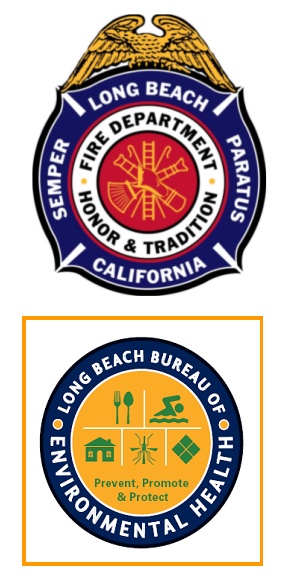
.jpg)

2525 Grand Avenue, Long Beach, CA 90815
562-570-4131
The Certified Unified Program Agencies (CUPA) were established in 1993 with the passage of Senate Bill 1082 with the first CUPA certified in 1996. In those formative years there was some passionate and lively debate as to what agencies should be certified to administer this new program. Local Fire and Health agencies that were already engaged in regulatory affairs stated their cases as to who was better prepared to implement this complicated regulatory effort. Well we have learned a lot in the ensuing years and the CUPA program has matured and is now a model regulatory program which has improved compliance, consistency, consolidation and coordination across California.
There are currently 119 agencies implementing the CUPA program and it is an even split between local fire and health agencies. Long Beach is a city with a population of 470,000 located 20 miles south of Los Angeles. Long Beach is one of eight CUPAs in L.A. County. The Long Beach CUPA is one of the most unique models in the state. They have divided the implementation of the program between their fire and health agencies. In order to learn more about the long Beach model I recently Zoomed in to Long Beach and got the scoop on it from Linda Kolinski. Linda is the CUPA Program Coordinator for Long Beach Bureau of Environmental Health and has been for the past twenty plus years. In addition to administering the Long Beach program Linda is also a long time CUPA Forum board member, conference contributor and was recently appointed the CUPA Forum Trust Chair.
Long Beach has a history of being independent and unique, the 2000 census identified it as the most ethnically diverse city in the country, they are one of only three cities in California to have their own health dept., they have their own Municipal water Dept., Oil and Gas Dept., a municipal airport and they even have their own seaport, so they really do like their independence. That is why it is no surprise that their CUPA program is special. The Long Beach CUPA has a staff of 13 with four inspectors in the fire agency performing the UST, AST and Business Plan inspections and four inspectors in Environmental Health performing Hazardous Waste, Tiered Permitting and the Cal ARP program plus Linda the Program Coordinator, one supervisor, a CUPA Manager and one clerical staff each at Fire and Health. Long Beach has harnessed the best of both worlds by blending their inhouse Fire and Health resources.
Long Beach is home to the 2nd busiest seaport in the nation and regulates more than 1500 businesses. As a seasoned regulator Linda knows the key to a high rate of compliance is excellent outreach and education. The Long Beach staff pride themselves on customer service, getting out in the field, educating and developing personal relationships with business owners and that is what gives this program a small-town feel. This approach has led to operators being more willing to ask questions and ultimately a higher rate of compliance. The California CUPA model has improved compliance and made businesses and people safer while protecting the environment.
The Pandemic has certainly affected their inspection program. All staff were working from home from March to May. Initially a major effort was made to capture email addresses for non CUPA facilities to enable communication on a mass level. They were also able to catch up on CERS reviews and Cal ARP audits. All UST and AST inspections have continued to be conducted during the pandemic since these inspections can be performed while practicing social distancing. 2020 will be an aberration for all the CUPA agencies in the state. Public and employee safety is a priority and public health guidelines i.e. stay at home orders, business closures and social distancing have made in person inspections extremely challenging if not impossible, so no one is going to meet their inspections goals this year. 2020 was the year to catch up on CERS reviews, Cal ARP and other administrative tasks. What Long Beach also has done is to improve the communication with businesses via emails, phone contact and education and outreach.
The Long Beach CUPA, while it is a unique model with a blend of Fire and Health staff, they have the same goal for every business and that is compliance and safety. Linda and her staff have forged a mutually beneficial relationship with the regulated community by focusing on education, outreach and interpersonal relationships that create trust and assistance. The business community is fortunate to have an agency they can count on to provide accurate information and guidance. Long Beach is a model CUPA in many ways and they did it their way. In fact, in addition to implementing the CUPA programs, their staff also respond to hazardous materials incidents 24/7 everyday of the year, they perform business license, medical waste, body art and community noise inspections and also provide site mitigation/clean up (non-LOP) assistance, now that is efficiency
So if you are ever in the area and want to take in some of the most beautiful sights in California visit Long Beach and you will not be disappointed. You will find 11 miles of gorgeous coast line, the Aquarium of the Pacific and the Queen Mary, you can also be sure that the Long Beach CUPA will be on duty to protect the people and the environment.
Los Angeles City Fire Department CUPA
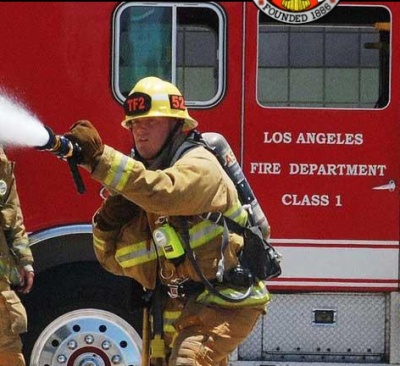
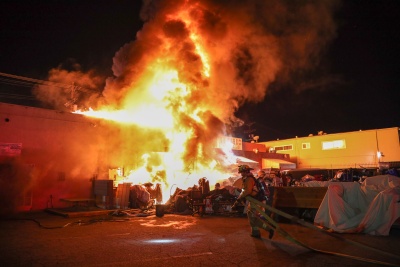

200 N. Main St, Los Angeles CA 90012
(213) 978-3680
Our CUPA profiles have taken all over the state of California from small rural counties to our state capitol, the city of Los Angeles is our feature CUPA this time. LA city is one of the oldest and most iconic cities in the state with deep cultural roots and numerous diverse districts, it is the home of the movie and television industry, famous destinations like Venice beach, wineries, amusement parks, museums and much more. The city has hosted the summer Olympics twice and is the host of this years Superbowl, the LA city economy generates over one trillion dollars annually. As the second largest city in the nation, the shear size and density presents a unique challenge in administering the CUPA program. To put it in perspective, consider that LA city is more populous than 24 states with almost 4 million residents packed into 500 square miles, that equates to 8,000 people per square mile, one of our recent profiles featured a county with 2 people per square mile. While rural CUPA agencies struggle with staffing, training and administration an urban behemoth like LA city has their own set of challenges. I was able to sit down with Royce Long and Steve Hamilton of LA city fire to find out how they have handled the challenge.
LA City Fire Department CUPA utilizes 17 fire inspectors, four fire inspector IIs, two captains, 6 civilian inspectors and ten admin staff to implement the Unified Program, it has one Participating Agency in LA County Fire that performs the hazardous waste inspections. Like many agencies, LA City has had their own struggles with the Unified Program implementation. In 2016 the program was on a Program Improvement Agreement with the state due to significant program deficiencies. That is when Royce arrived, having come from Orange County where he had been with that CUPA for a dozen years. It took time and effort that required listening to everyone's input, establishing committees for each program, training and initially just cleaning up the office. Royce and his team worked together to implement changes, improve working conditions, intensify training in all areas and provide much needed infrastructure. It all worked, LA city CUPA received Cal EPAs Environmental Achievement Award in 2017. As one team member said they went from zero to hero in just two years, an amazing accomplishment in which they found the input and advice from the state program evaluators helpful. The LA city CUPA has built a strong team that not only implements the Unified Program but makes it a valuable asset that provides critical information to responders.
This CUPA does inspections and enforcement, with an inventory of about 10,000 facilities they just do a lot more than other CUPAs but it is some of the potentially lifesaving innovations that really standout. Since the legalization of cannabis in California, illegal THC extraction labs or Butane Honey Oil (BHO) labs have become a hazard across the state, staff has estimated that there are hundreds of Illegal BHO labs in the city, each one a potential time bomb. The City is experiencing reckless and unlawful commercial storage of butane and nitrous oxide both of which are closely attached to the new cannabis market. Unfortunately, the mismanagement of the hazardous materials has been responsible for numerous explosions and fires across the city. These incidents have also resulted in severely injured first responders and major property loss. On Saturday, May 16, 2020, at approximately 18:27:00 hours, the Los Angeles City Fire Department (LAFD) responded to a structure fire at in the Skid Row area of downtown Los Angeles. The first arriving resources found a one-story commercial building with light, intermittent brown smoke showing from the top of two closed rolling steel doors. The subject occupancy was doing business as a wholesale distributor to dispensaries and smoke shops, and it had closed for the day prior to the time of alarm. Conditions noticeably worsened over the next several minutes. Initially, members described a notable change in smoke emitting from the front of the structure, and then a rapidly increasing freight train or jet-like sound, accompanied by rapid and escalating popping-like noises. Subsequently, companies initiated a rapid retreat both off the roof and out of the building. As firefighters began initiating their escape, a large volume of smoke ignited, and then immediately following, fire blowtorched out of the front of the occupancy, across the street, and out of the rear portion of the roof. As a result of the catastrophic fire event, just eleven (11) minutes into the incident, twelve (12) firefighters were injured. The injuries were sustained when the firefighters were engulfed by a large volume of fire, some while retreating from interior firefighting positions, and others as they were descending the aerial ladder. All told, eleven (11) firefighters sustained minor to critical burns, and one (1) additional firefighter suffered a lower extremity injury. A subsequent investigation revealed thousands of pounds of undisclosed butane stored in unlawful conditions.
The Fire Prevention Bureau (FPB), which includes the CUPA Section, has responded to the issue using the following strategies:
- The CUPA Section, in conjunction with their software vendor, and the Joint Hazard Assessment Team (JHAT) and Fire Operations, developed a new software called PEAC that overlays hazardous materials storage locations throughout the City with the name, volume and site map of the hazardous materials. This information is also being provided on the fire engine computers so that first responders are clearly aware of the hazardous materials at an incident before they arrive onsite. This is a first in the nation and goes a long way to protecting their first responders which is the goal of the CUPA program. The success of the PEAC program is now being recognized outside of our City borders and now other SoCal Fire Departments are planning on making the software available to their hazmat squads.
- LAFD CUPA is now part of a nationwide butane taskforce whose goal it is to control the import of illegal butane from overseas and ensure those who store or handle the material are identified and appropriately regulated.
- FPB developed an online referral form so that engine companies that identify potentially unregulated businesses can easily complete the form while in the field and refer it to FPB for follow up and permitting
LAFD CUPA worked with the CUPA Forum Board to develop the following state legislative proposals:
- amend the hazardous materials retail exemption so that high hazard hamzat in large volumes would not be exempted from disclosure;
- Suppliers of hazardous materials will be required to keep records of hazmat sales and make them available to the UPAs.
- Provide UPAs with the authority to direct hazmat handlers, especially illicit operators, to identify where hazmat where will be relocated in the event of a hazmat incident to ensure the receiving location is appropriate and the jurisdiction is aware of the storage.
Using drones equipped with combustible gas indicators that detect flammable atmospheres and other toxic gases, a radiation monitor and a thermal imaging camera they are able to remotely monitor potentially hazardous events. LAFD CUPA have spent many years developing out their Unmanned Aerial System (UAS) program which includes certifying drone pilots, working with vendors to mount hazmat meters on the drones that feed data real time back to the operators and incident commanders simultaneously. LAFD CUPA is also working with a major drone manufacturer to develop the next generation of drones that are designed for first responders and hazmat investigators. The new drone program will enhance the CUPAs investigations capabilities that relate to hazardous materials spills and clean up. This demonstrates the value integrating the Unified program with operations to help inform and protect responders and make the entire community safer.
LA City has built a team that in addition to the Unified Program staff includes over 3000 firefighters providing access to vital facility information and a convenient way for them to report potentially hazardous sites to the CUPA for follow up. While doing the required inspections and enforcement is the responsibility of every Unified Program Agency, LA city has shown the benefit of going well beyond the minimum standards. They have also demonstrated tremendous resiliency in resurrecting a program struggling to get by and making it a shining example of what it can be, a program staff is extremely proud of, and they are not done yet. Our CUPA profiles highlight compliance strategies and innovations that agencies across the state use to improve compliance, educate industry and make our communities safer. The LA City Fire CUPA epitomizes this and the drone program is only one example, they have also gone completely paperless, have an internship program helping with CERS and joined the Refinery Task Force the list goes on So the next time you visit tinsel town take comfort in the fact that thousand of highly trained individuals are vigilantly protecting this national treasure.
Los Angeles County Fire Department/CUPA Program
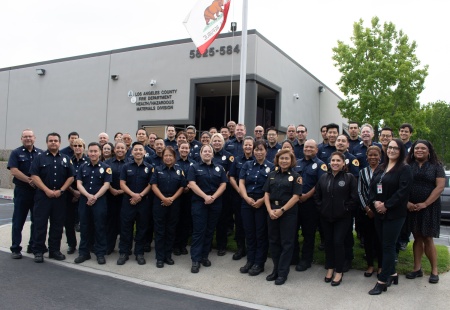

5825 Rickenbacker Rd, Commerce, CA 90040
1-323-890-4045
I was able to get the Health Haz Mat Chief Mario Tresierras, to sit down and let me know how its done in LA County. The county CUPA program here is administered here by LA County Fire, a huge agency with 4,775 employees, the Health Haz Mat Division (HHMD), which implements the program, has 90 technical staff and 31 administration staff with 6 temporary employees. There are actually eight CUPA agencies in this county, that makes the CUPA program here more complicated than most, not only is LA County Fire a CUPA but they also have 8 Participating Agencies (PAs) and they are the PA for three other agencies. It takes all these agencies working together to get the job done here. Historically when the CUPA program was formed, Counties had to apply and cities had the option to apply for all or parts of the program, which explains the multiple agencies involved. This also means there are lots of checks and balances, LA County evaluates their PAs, LA County is evaluated as a PA and the state evaluates them and the other CUPAs involved, that is a lot of evaluating to make sure the citizens are protected, and the program is coordinated, consolidated and consistent.
The sheer numbers here are staggering, the Health Haz Mat Division has 26,288 regulated facilities with 35,532 program elements, they perform 11,844 inspections each year with an annual budget just over 28 million dollars. Their inventory includes all the normal sites like auto repair, manufacturing and dry cleaners just a lot more than most places, they also have a number of high hazard or complex sites including three refineries, airports, aerospace, universities, sports venues, universities and gun ranges. Like every CUPA agency they do inspections and the enforcement that is required. What is unique is that the HHMD is the only CUPA in the state that has staff dedicated to enforcement with one supervisor and 4 investigators. This helps keep a level playing field, catch those that flagrantly violate environmental laws and validates the hard work the inspection staff does every day. This robust enforcement program utilizes the Administrative Enforcement Orders (AEO), they had 50 AEO hearings last year, and uses the County and City attorneys or the US Attorney General for more egregious violations.
Consistency is a cornerstone of the CUPA program and that is achieved through training. The HHMD puts all new staff through a two and a half month basic training before they ever go out in the field. Like many CUPA agencies in the state they rely on and support the annual CUPA Conference put on through the CUPA Forum for ongoing and specialized training. Last year they sent 55 staff to the conference for training but also as trainers, sharing their knowledge to help other CUPA staff learn, this all helps make the program consistent statewide. HHMD was a founding member of the CUPA Forum with a participating board member since its inception. Mario is carrying on that tradition as the PA representative for the board and the Emergency Response issue coordinator.
Emergency Response is nothing new to Mario, he was the supervisor for their emergency response program before his promotion to Chief. LA County has three Haz Mat response teams that respond 24/7, they average 1350 calls annually. Their calls run the full gamut and include illegal dumps, traffic collisions, releases from facilities, mercury spills in schools, drug labs, pipeline ruptures and chemical suicides. Staffed with 18 responders, 3 supervisors and one manager they also have some unique and high-profile calls that include the Aliso Canyon natural gas leak, Maywood Fruitland Panda metals fire, the Delta fuel dump of 15,000 gallons of jet fuel, refinery fires and now the Butane Honey Oil labs or BHO labs that extract THC using Butane. The BHO labs present a significant hazard in urban areas because of the flammability of butane and the potential for destructive and powerful explosions. Needles to say this is a busy group that is vital in protecting the community.
As if they dont do enough the LA County CUPA also does site mitigation for contaminated sites using their Corrective Action authority. Mitigation of these contaminated sites helps to restore and revitalize the community by making these properties useable again, important work where land is such a valuable commodity.
The pandemic affected this CUPA too, causing a 7-week hiatus where staff worked remotely, catching up on their CERS entries and Return to Compliance notices. After that short break they resumed field work with established protocols to protect their staff and the public. LA County Fire is committed to providing the tools and training so staff can accomplish the mission, which is to protect the public health and the environment.
So, whenever you are visiting LA County, rest assured that the 4,775 employees of LA County Fire are on the job to protect us all. The CUPA program in LA County is a prime example of multiple agencies working together to achieve a common goal by working to improve compliance, responding to emergencies and cleaning up contaminated sites, it takes them all to get it done in an area so large and densely populated.
Mendocino County CUPA


860 N. Bush St, Ukiah CA 95482
1-707-234-6625
The CUPA here is part of Environmental Health, I was able to sit down with Kirk Ford, their Environmental Manager, to tell me how this CUPA gets it done. Their Unified Program has an inventory of about 700 facilities with one part time and three full time inspectors to do the inspections. Typical industries here consist of mechanical repair shops, breweries, wineries and cell phone sites. They have 60 Underground Storage Tank (UST) sites, 12 of these still have single walled tanks which must be out of service by 2025. That is a looming issue for many CUPA agencies throughout the state. This CUPA take special pride in their UST program and is committed to making sure staff is well trained and properly equipped. A primary reason for this focus is that the county relies on well water in many areas, so water quality is of utmost importance, after all they drink the water, make baby formula and bathe in it. Their commitment to the UST program has helped educate operators and the result is a high rate of compliance and very few violations. They also have two Cal Accidental Release Prevention (ARP) sites, these sites
handle acutely hazardous materials and must comply with more stringent requirements. The Cal ARP sites here handle chlorine gas, for water purification and sulfur dioxide, a disinfectant used in the wine industry. They also have some cannabis industry here, both growing and extraction operations that handle ethyl alcohol and diesel. There is a solid waste facility that accepts hazardous waste from businesses. Having a local disposal site reduces the cost of disposal for waste generators and reduces illegal dumping which means fewer emergency response calls.
Emergency response is an issue every county, in rural areas it is an even bigger challenge. Like many rural counties Mendocino must rely on volunteer fire departments to fill all the needed positions on a Haz Mat call. These calls never go quickly but getting all the volunteers together takes even longer. Haz Mat calls require a small army to properly staff, you need an entry team, back up entry team, safety officers, tech Ref, decontamination team and more. The CUPA staff here are trained to the Haz Mat Technician or Specialist level and maintain the Haz Mat response vehicle for the Redwood Empire Hazardous Incident Team (REHIT) and act as the Tech Ref on calls because of their technical expertise. Thankfully they do not many calls, most of them are for fuel spills where they oversee the clean-up, US 101 goes right through this county so there is a lot if traffic and the occasional accident.
The new normal in California is the ever-looming wildfire season. They have had their share of fires here too. Since 2017 they have lost over 1,000 homes to wildfires. While these were not the largest fires in the state, they were still devastating to those affected. The staff has gotten very familiar with the aftermath and the hard work it takes to recover from a wildfire. The recovery process starts with assessing each site then overseeing the cleanup, ensuring that hazardous debris is removed and disposed of properly. It is a long arduous process, but the staff have become adept at navigating it. In fact, in the spirit of helping out and utilizing this experience they recently reached out to Lahaina to offer assistance. That is what CUPAs do, they help each other.
In the spirit of helping each other, the California CUPA Forum does that year-round. Mendocino County CUPA applied for a grant from the CUPA Forum Trust to get all their paper files scanned. This was a huge step in upgrading from the 1997 Access Database they had been using. They now have new software and are using tablets, that incorporate the CERS violation library for inspections out in the field. The new software then automatically synchronizes with CERS which is a real time saver. That assistance from the CUPA Forum is appreciated for their scanning project and more, including the annual training conference, regional Technical Assistance Groups, on line videos and regional meetings that provide vital networking opportunities.
Mendocino County CUPA exemplifies what it takes to successfully implement a complex regulatory program in a large rural county. Naturally there is always room for improvement, the state does a Performance Evaluation every three years to help CUPA agency identify deficiencies. While it can sometimes seem to be intrusive or too detailed
it is helpful. In fact, here they feel that good leaders are in a constant state of improving and try to learn from the evaluation. Learning from the state experts is helpful taking ideas that improve the program realizing they can do better and implementing the identified changes.
Mendocino is a picturesque county with so much to offer from the beautiful coastline to the coastal range and numerous vineyards. The next time you are headed up north on US 101 take a detour into Mendocino County to see for yourself, enjoy the natural beauty, laid back atmosphere and friendly people. Rest assured that the staff of the Mendocino County Environmental Health CUPA are on the job making it a safer place one inspection at a time
Modoc County - A CUPA in The State of Jefferson
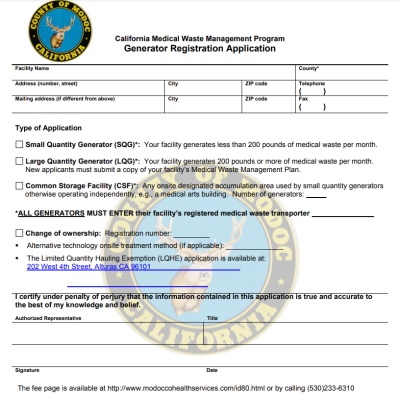
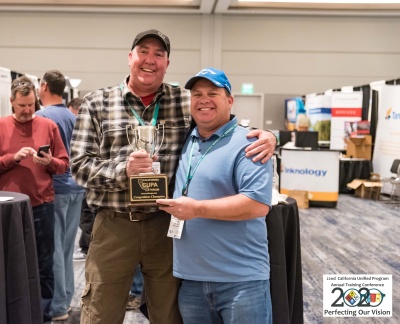

202 West 4th Street, Alturas, CA 96101
(530) 233-6310
Every CUPA has their own challenges, typically with staffing or inspection frequency. Some have dozens of inspectors and that is just for the six CUPA programs. It was truly eye opening for me to hear the Modoc County story. I mentioned Warren and Chris were the CUPA guys, well they are also the food inspectors, septic, water well, land use, animal control and code enforcement guys covering 4,300 square miles. Environmental Health staff consists of the Director, one senior staff, one admin staff and a part time technician to implement 22 programs in the county. It is a challenge just to keep up with the changes to the CUPA program let alone 16 other programs that all require training and technical expertise, not to mention the different interpersonal skills required.
Modoc County Environmental Health has the typical rural challenge of implementing not only the CUPA program but also many mandated critical public health programs that keep us all safe and healthy, whether its is a clean restaurant or clean water we all rely on them. So with two staff and a relatively small inventory for all business, balancing the mandate with the funding is a huge challenge. Actually setting reasonable fees that can fund all of these programs is impossible so smaller counties rely on the State rural reimbursement and realignment funding from the local budget to make it work. Changes to the CUPA program over the years have impacted every CUPA but smaller agencies that could easily handle hardcopy files had to switch to electronic reporting. This change tripled the staff time spent on data input. We all know that data can be important but there is a steep price to pay for the rural agencies that have less staff and fewer resources, it can bury them. Like many mandated programs the CUPA program has added elements like the Aboveground Storage Tank program in addition to increased annual training requirements for UST certification. Especially for smaller agencies, these additions all take staff time and bring them closer to the breaking point, where they will no longer be able to adequately implement all these regulatory programs.
Implementing so many diverse programs requires a special skill set. Modoc Environmental Health relies on outreach and education to achieve compliance. Working to help the business owners understand the requirements and ultimately comply. The 1998 UST upgrade requirements virtually wiped out the mom-and-pop gas stations, now there are only six service stations in the county and three of them are on tribal lands. That is why helping operators is critical to keeping things running and the gas flowing. Regulating any business in this tightly knit community means the operator could be your neighbor or little league coach. The approach to compliance and keeping well staff trained on the ever-changing regulatory requirements are important.
Modoc relies on the CUPA conference to fulfill the annual training requirements, attaining the number of hours can be a challenge. Warren and Chris are regular conference attendees and in addition to the training they value networking opportunities that bring state and local staff together which can create long lasting contacts that can provide critical assistance when needed. They did zoom into this years virtual conference but found it harder to attend all the sessions they needed, mainly because they were still in their office, they also really missed the networking and are hoping for an in-person conference again soon.
I recently had the chance to drive through Modoc on a post vaccination road trip. What a treat it was to explore the many beautiful natural wonders and such wide open spaces, that must be why they call it the last best place. The Lava Beds National Monument, the Lava Beds Wilderness, the Modoc national Forest and the many hot spring and lava tubes make this a very special place to visit. Like many of the distinctly unique areas of California, the residents here appreciate the natural beauty and take care of it because they depend on it. Although it may be a bit out of the way a trip to Modoc will be well worth it and you can be sure that the staff at Modoc Environmental Health will be on the job working to keep the community healthier and safer.
Orange County, Leading the Way


Environmental Health Division, 1241 E. Dyer Road #120, Santa Ana, CA 92705
714-433-6010
CUPA agencies come in all sizes from small rural agencies to large urban ones. Our CUPA profiles have visited Calaveras County, Sacramento County and San Francisco, each unique in its own way. This time we go down south to Orange County and check in with Darwin Cheng their CUPA Program Manager. Darwin has been with Orange County Environmental Health since 2007, he is the current chair of the California CUPA Forum (CFB) and sports a law Degree from Western State University of Law, which makes his appointment as the CFB enforcement issue coordinator a good fit.
Orange County is more populous than 21 states, is home to the happiest place on earth and has a wide array of industries. Orange County Environmental Health (OCEH) delivers all of the traditional health programs from housing to food safety with a staff of approximately 200, 37 of which are in the CUPA program. OCEH is also the CUPA for the entire county.
Darwin likes to think of his unit as a well-oiled machine. In this age of technology with apps for everything, smart phones, tablets and laptops the importance of personal interaction and customer service is often lost, but not in Orange County, where customer service is the cornerstone of this CUPA. OCEH offers a variety of compliance assistance resources and one industry favorite is the California Environmental Reporting System (CERS) Lab held every Thursday from January to April. At the lab staff teaches businesses to navigate through and comply with CERS, providing the laptops and helping attendees enter or update their information. Thousands of businesses each year take advantage of this opportunity, enabling business to comply and ultimately making the inspectors job easier. This mutually beneficial service is truly customer service at its best.
The CUPA program has developed over the years and the technical expertise required for inspection staff has constantly increased. OCEH inspectors are proficient in all CUPA programs areas which makes keeping staff well trained a constant challenge. Like most agencies in the state OCEH staff attends the CUPA conference, specialized training for enforcement and investigation, the Basic Inspector Academy and other training opportunities. In addition to this classroom training OCEH has developed a FREE on-line UST training for inspection staff that helps them in preparing for their ICC certification. This online training allows staff to study for the ICC exam when it fits their schedule, eliminating multiple days of classroom training making it an efficient and cost effective alternative. OCEH intends to roll this training out soon and offer it to CUPAs statewide. This type of leadership is what makes the CUPA program so unique, the sharing of resources and the willingness to develop a training program and then with no strings attached offer it to other agencies. This has happened over and over, CUPAs sharing what they develop because they have the ability, resources and recognize the statewide benefit. Agencies of all sizes will benefit from this on line UST training for years to come.
This same big picture thinking applies to how they regulate. The CUPA program started with the regulation of traditional industries and as it matured other areas of regulatory oversight have emerged. Retailers have become a significant part of the CUPA regulated facilities. Large big box stores got the message early that outdated and retrograde retail products may be hazardous and were required to be disposed of properly. It took more time for that same message to get to the smaller chains, mom and pop retailers and salon suppliers. OCEH works hard to educate and assist these smaller businesses to understand the regulations and comply. Darwin believes the best approach is to work with the retail industry to develop environmentally responsible regulations and guidelines for all retailers in California and hopefully nationwide.
As the third largest county in the state with more than 8,000 regulated facilities OCEH has their work cut out in delivering all of the CUPA programs. Thankfully they have some partners helping, the six Participating Agencies (PAs) that deliver portions of the program. OCEH has developed a symbiotic relationship with their PAs, working together just like it was envisioned when the program was developed. OCEH meets with the PAs quarterly, assists with enforcement, provides support with emergency response when requested and even shares the CERS portal lab training with the PAs regulated community, truly working together for the common goal of regulatory compliance.
This well-oiled machine takes pride in their experienced and proficient inspectors. That makes the staff particularly attractive to other agencies when hiring, success often results in staff turnover, creating a constant need for new inspectors. That is why OCEH has developed an intern program that helps put the CUPA program on college graduates radar as a career. The intern program is about 10 weeks long and offers students a chance to see what CUPAs are all about. Participants are given a project that fits their skill set with an opportunity to actually produce a product that is tangible. An example project is the resources for industry on the OCEH website which contains guidance for complying with the Haz Waste, Haz Mat, UST and APSA programs. The internship lets OCEH get to know the student, their strengths, work ethic and most importantly their interpersonal skills. As Darwin says, those people skills are imperative, you can train folks on the technical aspects of the program, but common sense and people skills are the foundation of a successful CUPA program.
Irrespective of size, Unified Program Agencies in every city and county in California continue to work together to protect and educate their communities. Orange County has always demonstrated the leadership and innovation that has made the CUPA program a regulatory model. So whether you are visiting the happiest place on earth, the Golden Gate Bridge or the majestic Sierras there is always CUPA on duty. The challenges, hazards, geography and demographics may vary but they share a common mission, to protect their communities one inspection at a time.
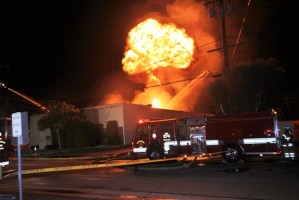
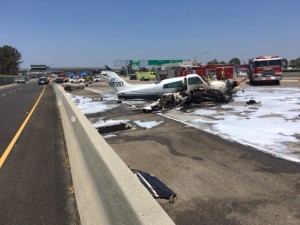
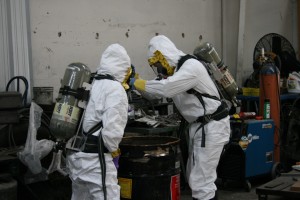
Placer County, Adventure Happens Here



3091 County Center Drive Suite 180 Auburn, CA 95603
530-745-2300
To find out about their CUPA program I was able to sit down with Jessica Gallagher the HazMat, Solid Waste, and Emergency Response Supervisor. The CUPA program is administered by the Environmental Health, a Division of the Health and Human Services Department. The Division has a total staff of 35 with 7 inspectors in the CUPA program and one additional inspector for the Solid Waste program. Environmental Health is the CUPA for all areas of Placer County with the exception of the City of Roseville which has their own CUPA program. All Placer County CUPA staff are Registered Environmental Health Specialists (REHS) which allows staffing flexibility and provides more diversity for staff in their career. Inspectors have the option to move between the Consumer Protection. Land Use, and CUPA programs due to their REHS certification. The Divisions CUPA serves 1260 facilities which includes 5 Cal ARP sites, 90 underground storage tank facilities, and 165 Aboveground Storage Tank facilities, 45 of which are non-qualified. Inspectors are assigned districts with about 250 sites each and inspect about half of those annually. Placer County CUPAs goal is to inspect every facility annually, however it currently takes about 18 months to complete a district. Inspecting facilities more frequently than the state mandated 3yr inspection cycle equals more compliant facilities. Covid slowed the inspection process in Placer County just like everywhere else, but Placer CUPA still managed to perform inspections and a majority of CUPA regulated businesses stayed open. During Covid, staff worked remotely from home doing data entry, facility reviews, and report write ups, only going out for the field work. The pandemic changed the way we all did business, however it also improved the ability for inspectors to work remotely which they continue to do.
The Placer County CUPA prides itself on customer service, stressing education while assisting businesses in their compliance efforts, it is that business friendly approach that improves compliance. Regardless of business type most operators want to comply, but the complex regulations, industry challenges and a pandemic sometimes get in the way, making education and customer service vital. Placer County also regulates two active landfills under their Local Enforcement Agency program, both have permitted Household Hazardous Waste facilities with a Very Small Quantity Generator (VSQG) component that accepts waste from Business. The VSQG program provides operators with a convenient and affordable option for hazardous waste disposal, reducing improper waste disposal. Placer CUPA has an active enforcement program to address recalcitrant facilities that need the extra nudge of enforcement to comply. Placer utilizes the Administrative Enforcement Order (AEO) process for most of them. The AEO process allows a lot of flexibility in setting penalties enabling agencies to assess fines that provide the required punitive measure while not putting anyone out of business. The most egregious violators and statewide cases are referred to their local District Attorney for prosecution.
Administering a complex regulatory program while handling complaints, emergency response, multiple fire recovery operations, and staff turnover throughout COVID and departmental changes has been challenging. However, Placer CUPA has pushed through and has continued to make significant efforts towards program improvement. Most recently, Placer County CUPA is making the move to go completely paperless as they prepare for a building move at the end of 2023. Scanning and efforts to go paperless started several years ago and is just now becoming a feasible reality. For current daily inspection operations, Placer County inspectors utilize laptops with wireless cards to connect to the internet while in the field. The ability to be mobile allows staff to perform inspections, complete reports, and assist operators with return to compliance at the time of inspection.
In 2019, Placer County CUPA engaged with the Waterboard and their contractor Red Horse to scan and upload 30 years of historical Leaking Underground Storage Tank (LUST) files to Geotracker. The final goal in going paperless is to make all Placer County CUPA records digitally accessible to the public. Going fully paperless has been a heavy lift for the division, however the benefits of being paperless has been worth the efforts.
When it comes to Emergency Response, Placer County CUPA prides itself in being a collaborative agency, often working with the Department of Fish and Wildlifes Oil Spill Prevention and Response Team, local fire agencies, California Highway Patrol, and outside stakeholders such as Union Pacific, PG&E, CalTrans, water and sewer purveyors, and local city governments departments to ensure the environment and public health are protected. Multiple Placer County CUPA staff are trained Haz Mat Technicians through level D and respond to hazardous materials emergencies 24/7 when needed. A major transportation corridor here is Interstate 80 and the Union Pacific Railway, both of which run the length of Placer County. These thoroughfares are busy routes with thousands of big rig trucks and trains moving commodities to and from California on an annual basis. All the transport traffic inevitably means more incidents. During the winter months, Placer County CUPA frequently receives multiple CalOES reports a week regarding big rig wrecks and diesel fuel release. These incidents are always a concern as surface water is a major source of drinking water within Placer County. Staff respond and follow incidents of concern to ensure waterways are protected and a released product does not contaminate drinking water. In the event a waterway is impacted, Placer County oversees the cleanup and refers to the Waterboard for additional clean-up oversight when necessary. Placer County CUPA is not a Type Hazmat Team and rely on the Type 1 Hazmat Team from the City of Roseville for the most significant incidents, working together to mitigate and remediate calls as needed.
The Placer County CUPA is a great example of what the program is all about, providing a consolidated, coordinated and consistent regulatory program that actually helps industry understand and comply. Placer County has also shown their flexibility and resiliency when facing the challenges of wildfires, significant staffing changes, a pandemic, and administration of a complex program. The next time you are crossing the Sierras on your way to Tahoe or beyond rest assured that Placer County CUPA staff are on the job to keep the community safer.
Riverside County CUPA - Hazardous Materials Management Branch
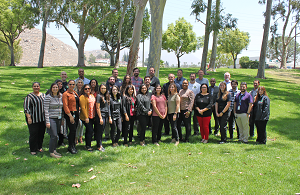

4065 County Circle Dr, Room 104, Riverside, CA 92503
(951) 358-5055
An Inland Empire CUPA
The diversity of the 58 counties that make up our beautiful state of California never ceases to amaze. Our profiles have gone from idyllic beaches, the majestic Sierras, urban hubs and rural retreats. This time we stopped in Riverside County, with 2.4 million people its the fourth largest county in the state and 10th largest in the US, encompassing 7300 square miles its about the same size as New Jersey. The natural beauty includes numerous regional Parks like Idyllwild and Lake Cahuilla Recreation Area plus natural wonders like Jacinto Mountains and Joshua Tree National Park. The County seat and most populous city is Riverside and the Coachella Valley in the central region of the county includes Palm Springs, Indian Wells, La Quinta and more. Riverside is a dynamic county and one of the fastest growing counties in the state with more affordable housing and a diverse workforce. Centrally located and bordered by Los Angeles County on the west and stretching to Arizona on the east its a short drive to either. While agriculture has historically been the dominant industry the technology sector and manufacturing are gaining ground fast. Renewable energy is also gaining ground with over 2,000 megawatts of capacity, one of the largest for a county in the State, plus over 4,000 wind turbines.Riverside County Department of Environmental Health, Hazardous Materials Management Branch is the CUPA and I recently caught up with Nicholas Crain to find out all about their program. Nick has been with Riverside since 2007. The Haz Mat Branch has close to 8,000 facilities in their inventory and they implement all six CUPA regulatory programs. As the CUPA, they also have two Participating Agencies (PAs), Corona Fire which does Business Plan inspections and Riverside Fire which does the Business Plan and APSA programs. The Branch has a staff of 39 with 28 inspectors. The inspectors here are all trained and perform inspections in every program, so they are well rounded professionals. Due to the sheer size of this county, there are 4 Branch offices to improve customer service and efficiency, reducing staff drive time and making it more convenient for business owners is important.
Riverside like most CUPA agencies prioritizes customer service and education with a positive approach, almost like a consultant for local business in partnership to achieve environmental compliance. While outreach and education efforts get the majority of facilities to comply, there are always those few recalcitrant sites that just wont comply without some form of enforcement, facilities here have to earn this enforcement. Riverside County has a robust enforcement program that pursues a graduated series of enforcement. Multiple checks and balances exist in daily processes to ensure proper violation classification and enforcement escalation for violations observed during inspections. For violations that require escalation, the internal Administrative Enforcement Order (AEO) process for formal enforcement is streamlined and accessible with over 58 AEOs being conducted in the last two years. In addition, the City of Riverside PA has started utilizing the AEO process for enforcement within the jurisdiction of the PA, utilizing CUPA staff. The City of Corona PA is willing to soon start this process as well. This parallel enforcement strategy is expected to make enforcement more comprehensive and consistent within Riverside County for all businesses, whether regulated by the CUPA or a PA. The CUPA works very closely with Riverside County's Office of the District Attorney (DA) staff on Statewide and local enforcement cases, while also being an active participant in the DAs Environmental Crimes Task Force. All of this is done to keep the playing field level for all business and eliminate any economic advantage noncompliance would provide.
Training is a priority for every CUPA, and Riverside puts all of their new hires through a rigorous training program to ensure they are fully trained within six months. Ongoing training is attained through attendance at the annual CUPA Conference and internal refreshers. In addition to just attending, the staff from Riverside are perennial trainers at the conference, not only sharing their knowledge but by being the trainer which always increases your own knowledge and broadens your perspective. All of this training is vital to keep abreast of the ever-changing regulations in the CUPA program.
Riverside's Haz Mat Branch also helps staff the County's Hazardous Materials emergency response team. All staff are trained to the Haz Mat Technician level with ER responders to the Specialist level. Being a member of the emergency response team gives inspectors a valuable perspective and improves their skill set, but participation on the team is voluntary. The Emergency Response Program consists of a joint agency response with Cal Fire/Riverside County Fire that respond 24 hours a day throughout the county. In addition, staff respond with 3 city Haz Mat Teams (Cities of Corona, Hemet, and Riverside), and conduct complaint investigations, including responding to Cal EPA and DTSC referrals. In the past, emergency responders were drawn from inspection staff responding to emergency calls throughout the county 24 hours a day for the on-call period. They now have dedicated staff to take care of the daytime calls and to provide supervision. The CUPA logged in about 920 Emergency Response Complaint Investigations (ERCIs) during the last fiscal year.
The pandemic affected this CUPA just like every agency and business in the nation. They staggered office time for staff and performed contactless inspections while providing increased support to businesses. The UST program continued to perform inspections after a two-week interruption, as these inspections were conducted outdoors, with other inspections resuming shortly after once safeguards were put into place to protect staff. They are now back to normal and hope to remain that way. To help attract new staff they have a ride along program and also draw from UC Riverside and Cal State San Bernardino for internships on special projects. The growing population and business inventory mean that they will need to sustainably increase staffing continually, so recruitment is an ongoing endeavor.
The Riverside CUPA is a shining example of what the Unified Program is all about, providing outreach and education to business and ensuring a level playing field. A diverse and dynamic County of Riverside has it all from recreational lakes and gorgeous mountains to their spectacular and vast desert. So the next time you are in the area stop in Riverside County where you can be sure the staff is always there to protect you, 24 hours a day.
Sacramento County Environmental Management Department
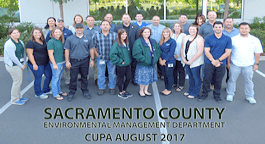


10590 Armstrong Avenue, Mather, CA 95655
916-875-8484
By Bill Lent
A Changing Landscape
Rocket engines, now gone silent, used to reverberate across Sacramento's cityscape and dominate the local economy. The Tower Theater and state fair were marquee attractions to this self-described "cow town". We caught up with Marie Woodin, The Interim Director of Sacramento's Environmental Management Department, who cannot afford the time to wax nostalgic for industries departed, or air bases long since closed. That was the Sacramento of yesteryear. The agency has 124 staff to support 32 regulatory programs. A large component is their CUPA program which has 30 staff members and 4,000 inspections to oversee with new college recruits to hire and a regulatory playing field to keep level.
Today, Sacramento is the thriving capitol of the most populous state in the U.S.A., a techie's and hipster's destination, an ever changing landscape with a healthy and growing downtown that features the Golden One Center for NBA action and concerts, plus a sizzling nightlife. Sacramento has been deemed the Farm-To-Fork capital and the surrounding 1.5 million acres of farm land makes that a reality. In order to keep people and the environment safe in such a dynamic setting, the Sacramento Environmental Management Division (EMD) must challenge every assumption of business-as-usual. EMD is constantly working to stay ahead of changes in the law, industry, work force and society. Whether Marie's team is inventing new fee systems to reward good players, or training staff how to inspect cannabis growing operations, Sacramento EMD is creating solutions to problems others don't even know exist.
Attracting New Talent and Keeping a Vital Workforce
A healthy economy of emerging industries, including technology, biotech and manufacturing, make attracting new CUPA employees especially challenging. True to their innovative nature, Sacramento County tables the usual job fairs and workshops to attract students, but also uses a variety of social media platforms to more effectively reach out to the new workforce. This effort helps to spread the word that a career in the public sector is personally rewarding and pays well. The Agency has a robust intern program that helps ensure the job is a good fit for both the agency and the individual. In the city of Farm-To-Fork, EMD benefits from Intern-To-Employee strategies, resulting in many excellent CUPA staffers.
The CUPA universe has become so complex and technically challenging that it could give you a stabbing headache, like too much Leatherby's ice cream, a local favorite, too quickly. The CUPA program started in 1993 as a simple way to consolidate, coordinate and improve consistency of the existing regulatory program. Today, that simple concept has grown exponentially in size and complexity. In response to this increased demand for technical expertise, the EMD has assigned specialized teams for UST inspections, installations, removals and for Cal ARP oversight. While specialization is needed, the well-rounded generalist is also a valuable commodity and EMD incorporates a holistic approach to training their specialists. When needed locally or deployed via mutual aid, Sacramento EMD staff members will be a very valuable asset, able to assist in all core programs seamlessly.
Canna-Do Attitude
Not unlike the Gold Rush of 1849, the legalization of cannabis has the potential of dramatic impacts on California. The products will vary from choice "buds" to extracts, oils, creams and edibles. Along with the associated manufacturing processes, the cultivation and retail industry is projected to generate billions of dollars into the state economy. The City of Sacramento passed an ordinance, which allows indoor cannabis cultivators and manufacturers, they are issuing 200 licensed permits to these business groups. The Agency is ready for the challenge and is training their staff on the unique hazards that they may encounter during inspections, from explosive gases to poison oak. They will have a team of inspectors that will work to educate the stakeholders and to ensure compliance while this industry continues to develop, stay tuned.
Enforcement: Leverage, Not Punishment
True to their pioneering nature, Sacramento EMD incorporates unique enforcement tools in their compliance program. To improve operator education/awareness, EMD created short compliance videos and have linked them to the inspection reports so owners and operators can easily view them using their smart phones. For businesses requiring additional oversight, the MFI, or More Frequent Inspection program, focuses resources on facilities that have critical violations and increases the frequency of inspections on these facilities until their level of compliance improves. Finally, EMD provides a portion of their enforcement money to compliant businesses as an Enforcement Revenue Credit, this is based on an algorithm addressing agency costs, etc., then reduces compliant facilities' bills as an incentive for continued compliance. Ensuring a level playing field is never easy, but the EMD strives to do just that, enacting enforcement actions businesses, and local, state and federal agencies, when necessary and rewarding compliance with innovation.
In Conclusion...
Sacramento County Environmental Management Department has always been a leader with great vision. They were a founding member of the California CUPA Forum and are active in the annual training conference and statewide training of efforts while also participating in many work groups and committees that help improve CUPA program delivery statewide. Their success is the result of never being afraid of innovation or changes that improve program implementation. The Agency's long history of success and leadership are one of the many examples of CUPA agencies through California working and looking forward to make our great state healthier and safer.
San Bernardino County Fire CUPA
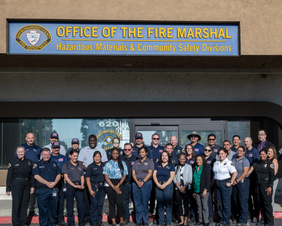

620 S. E Street, San Bernardino, CA 92415
909.386.8401
Our Profiles have taken us all over California from urban to rural areas each with their own distinct beauty and San Bernardino County, our current Feature CUPA is no exception. As the largest county in the contiguous United States, it is about the size of a state like West Virginia, so it is not surprising that this County has a little bit of everything. That everything includes the Mojave Desert, Lake Arrowhead, Big Bear Lake ski resort and Joshua Tree. The wide-open spaces create a setting ideal for all kinds of activities such as off-roading with dirt bikes, skiing in the high country, water skiing or just basking in the natural beauty. The County is also the home of the King of the Hammers, a ten-day desert and rock crawling festival that takes place in February offering multiple classes of racing as well as plenty of entertainment and good food. If it is entertainment you seek, try going to Glen Helen Amphitheater, the largest outdoor music venue in the country. San Bernadino County has a population just over 2 million, the fifth most populous county in the state.
To find out about their CUPA agency, I was able to sit down with Fire Marshal Monica Ronchetti. The CUPA program is administered by San Bernadino County Fire Protection District and serves as the CUPA for the entire county. They have a staff of 44, which includes 25 inspectors to regulate over 8,000 facilities in their inventory. The Hazardous Materials Specialists (HMS) are mostly generalists that are trained to inspect all the CUPA program elements. Lead HMS conduct inspections of specialized facilities, including approximately 100 Cal ARP facilities, 40 Tiered Permitting, and 235 APSA facilities exceeding 10,000 gallons of petroleum based products. Businesses subject to the Underground Storage Tank (UST) program are inspected annually; the remaining facilities are inspected every three years as required. Like every local CUPA agency, they stress education to help operators comply. They provide a CERS kiosk that operators can use to enter facility or business information, and they always are available to assist businesses over the phone through the CERS Help Desk. The county has a large Hispanic population, in fact more than half of the residents are Hispanic, rendering it California's largest Hispanic county and the second largest in the US. Consequently, English is a second language for many of the business operators therefore providing assistance to these operators is critical, so naturally, the San Bernardino CUPA has Spanish speaking inspectors to assist operators to understand the requirements and comply with requirements. An additional resource to assist the local communities are the 14 permanent Household Hazardous Waste facilities. These facilities are located in different areas of the County (West End, Mountain, Low and High Desert and Needles).They collect residential hazardous waste but also accept it from local businesses that generate small quantities of hazardous waste. Thus providing a great service for industry and community that allows for convenient and more affordable disposal and reduces illegal disposal. One-day special collections of hazardous waste are also held in rural communities to ensure that everyone has access to the proper disposal of household hazardous waste. This section has 24 hardworking individuals that provide service to the community in all weather. Sites are open different days but you can find a site open Monday through Sunday.
Speaking of illegal disposal, they have six staff on the County Hazardous Material Response Team. Like everywhere, releases of hazardous materials occur too often in San Bernardino County. Most of these releases are confined to a small area, do not pose a public health threat, and are easily mitigated by the responsible party. However, some releases are more serious, releasing chemicals into surrounding areas, threatening groundwater, closing transportation corridors, or contributing to fires or explosions. These more extensive releases require emergency response from highly trained teams. The San Bernardino County Fire Office of the Fire Marshal Hazardous Materials Response Team (HMRT) responds to hazardous materials incidents that require control and containment, mitigation, or remediation. The HMRT, which is a section within the CUPA, also assists the County District Attorneys Office (DA) in the investigation of environmental crimes and responds to illegal hazardous waste disposal complaints. As Deputy Health Officers, the HMRT perform multiple job duties at emergency incidents, including hazard materials identification and categorization, technical advise, entry team participation, and evacuation and re-occupancy determination. The HMRT is composed of six Registered Environmental Health Specialists (REHS) with bachelors degrees in various sciences (Biology, Environmental Health, Chemistry, etc.), all certified to the Hazardous Materials Specialist level. The HMRT are active members of the San Bernardino County Hazardous Materials Responders Association, an organization of Hazmat response teams from various agencies throughout the county that coordinate and train together.
The San Bernadino CUPA works extremely hard to help industry comply with the complex regulations that comprise the Unified Program. Inspectors provide one-on-one education in the field as part of the inspection process and are more than willing to help via the phone or follow-up visits. Unfortunately, even with all their effort, some businesses never comply. In order to encourage businesses to comply, enforcement is sometimes necessary. They have implemented the Administrative Enforcement Order (AEO) as one of the processes to achieve compliance. The AEO process is very effective for many violations like failure to submit a Hazardous Materials Business Plan (HMBP) to CERS and other class one violations. The more egregious violators are referred to the local DA for violations like illegal disposal or negligent releases etc. The County's DA has also been involved in some of the statewide cases brought against businesses that have facilities in counties throughout the state. Enforcement is never the first choice, but it is vital to keep a level playing field, provide consequences for non-compliance, and validate the inspectors work.
As generalists, the inspection staff must be well trained on all elements of the Unified Program. In addition, the HMS staff here are also Registered Environmental Health Specialist (REHS) which requires the completion of 24 Continuing Education Units (CEU) every two years. Additionally, there is specialized training for Cal ARP and Tiered permitting, ICC CEUs for the UST program and annual HAZWOPER refresher, among other trainings. Inspectors can fulfill most of the training at the annual CUPA conference, which was held in person this year for the first time since the pandemic. While everyone prefers the in-person conference, virtual attendance is perfect for staff that are unable to attend should they need to provide coverage. New staff are initially sent to the states Basic Inspectors Academy to provide a foundation for what they will learn in the more specific CUPA program training. Attracting new employees is always a challenge, they provide inspection Ride-Along opportunities to introduce interested candidates to the Unified Program. Introducing them to the unique industries and diverse programs can be eye opening. A career as a CUPA inspector is challenging and always interesting. To stay connected, Monica is on the Advisory Board for Cal State San Bernadino who have internship opportunities, which helps attract candidates.
So, the next time you are passing through the Inland Empire, rest assured that the hard-working staff of San Bernadino County Fire Protection District CUPA are on the job, protecting the environment one inspection at a time. That is no easy task in a county roughly the size of Switzerland, with elevation changes from 500 feet to 11,000 feet with desert, mountains, and some pretty rough terrain. Don't hesitate to take a detour and enjoy the natural beauty of San Bernadino County.
San Diego Department of Environmental Health & Quality



5500 Overland Ave #170, San Diego, CA 92123
800-253-9933
- Food and Housing (FHD) conducts more than 39,000 restaurant and food truck / food cart inspections each year and issues the appropriate A-B-C grade card.
- Land and Water Quality tests the water of our world-famous beaches and bays and posts the results for residents and visitors.
- Community Health conducts collection of household hazardous materials in the unincorporated county; coordinates the county's asbestos and lead programs; and runs the vector control program to keep us safe from diseases such as West Nile virus, hantavirus, Lyme disease, and others.
- Hazardous Materials Division regulates more than 13,000 businesses to ensure that hazardous materials, hazardous and medical wastes, are properly cataloged, stored and managed.
San Luis Obispo County CUPA Program
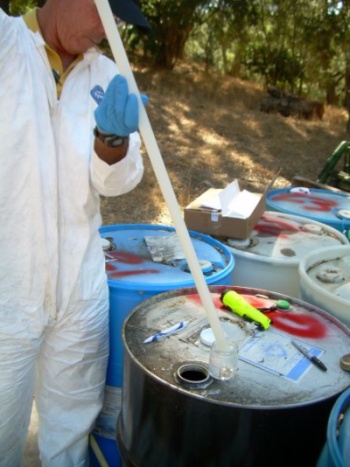
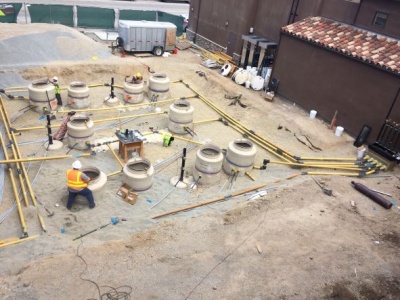

2156 Sierra Way, San Luis Obispo, CA
805-781-5554
Our CUPA profile this time takes us to San Luis Obispo County. Located midway between San Francisco and Los Angeles, San Luis Obispo has a lot to offer from its beaches and parks to its many attractions. The County of SLO as its referred to has some of the most picturesque beaches in California that include Pismo beach, Shell beach, Avila Beach, and Morro Bay. Attractions include Hearst Castle or the Mission at San Luis Obispo de Tolosa, the Monarch Butterfly Grove, and Montana de Oro State Park with its numerous hiking trails, just to name a few. San Luis Obispo County is the sixteenth largest county in the state, has a population of about 260,000 and like many California counties, agriculture is a big industry here with strawberries as their major crop along with a vibrant wine industry. The best things about this county are the unparcelled natural beauty, the many outdoor activities, the bays, state parks and the small town feel it has maintained.
I was able to sit down with their CUPA program manager Peter Hague, to get the lowdown on the CUPA here. The SLO CUPA is administered by the County's Environmental Health Division which has a staff of 28, including five staff members in the CUPA program. Peter started with Environmental Health 16 years ago as a food inspector but with his background in Environmental consulting and marine science he soon transitioned over to the CUPA program. Like CUPA inspectors across the state, the staff at the County of SLO know the key to getting business to comply and maintaining that compliance is education. The inspectors here are educators first, helping operators to comply with the complex regulations of the many CUPA program elements.
Whether it is USTs, Haz Waste or Cal ARP, understanding and complying with requirements is a challenge for every business owner. The staff here have helped Cal ARP regulated facilities either reduce their chemical inventory below the regulatory threshold or change the process entirely, for example, by switching from gaseous chlorine to liquid bleach. These changes not only reduced the regulatory burden on the business but also reduced the hazard the site presents, making the community safer, truly a win-win solution. The UST regulations are constantly changing, so helping operators comply is a never-ending task, the inspectors here are very involved in every installation and upgrade of USTs to help operators navigate through the process successfully. Staff have also helped UST operators understand the corrosive nature that diesel fuel can have and how aggressively it attacks steel tanks, important in this county that relies heavily on groundwater for drinking water and irrigation. They know that preventing pollution is cheaper and easier than cleaning it up. While compliance is the goal, there are always facilities that just will not comply. SLO CUPA has used the AEO process for enforcement of flagrant violations like raised UST sensors, spill reporting and system tampering. The process has worked well for them and has been tested all the way through the Administrative Law Judge (ALJ) and was upheld each time. While no one wants to do enforcement, it is an integral part of every regulatory program.
The SLO CUPA has done several things to help business comply, like promoting the Household Hazardous Waste program. Every landfill in the county has a collection site and in addition to accepting homeowner waste the sites also take appointments for businesses to bring in their generated waste. Giving businesses a convenient and affordable waste disposal option has significantly reduced the number of illegal roadside dumps, which helps this CUPA since they respond to Haz Mat calls countywide. The EHS staff are required to be Registered Environmental Health Specialists (REHS) and are on call for hazardous materials incidents, restaurant fires and sewage spills. The CUPA staff are trained to the Haz Mat Technician level and are part of the countys Hazardous Incident Response Team (HIRT), recently certified as a Cal OES Type 1 Team. The HIRT also includes Cal Fire and other regional fire departments that regularly train and drill together with the CUPA to constantly increase their proficiency. This partnership also allows the CUPA staff to focus more on clean up and public health aspects such as evacuations or reoccupying a building. To get responders the vital information they need when they need it, they have an HMBP cell phone application for responders. The app enables first responders to get facility information on-scene, just like the law intended, another critical improvement that protects responders and makes this community safer. The HIRT also involves local businesses and trains with them, which helps familiarize responders with these facilities while building trust and the relationships that are invaluable when emergencies occur.
Training is a challenge for every Unified Program agency. The County of SLO attends the CUPA conference every year and takes advantage of the California Hazardous Materials Investigators Association (CHMIA) conference which is held annually at nearby Shell Beach. Another local training resource they utilize is the California Specialized Training Institute (CSTI) which offers an array of training on Haz Mat response and planning, including the Haz Mat Technician series, a requirement for all team members here. The pandemic has changed the way training is delivered and much of it is now delivered virtually. While all of these sources provide valuable training, state agencies that are responsible for oversight of each program are encouraged to leverage the virtual environment to offer more training throughout the year to help staff understand the more complex issues and be aware of current or upcoming program changes. Virtual training is cost effective and could be held statewide. Local agencies would save on staff time and travel and the state agencies would be helping to proactively improve consistency statewide. The state oversight is an important component of the Unified Program and the evaluation process is a key element of this oversight, providing valuable input and perspective on each local program. The evaluators look at every aspect of the of the program in detail and while they are extremely knowledgeable on their respective programs. To enhance the evaluation process, it could potentially be beneficial if retired CUPA inspectors are included as part of the evaluation team to help provide that local, and holistic, perspective.
The pandemic has changed more than just the way training is delivered, staff has had to work remotely and conduct inspections and outreach. Outreach during the pandemic also included providing COVID-19 related best practice guidance to the regulated businesses. Fortunately, the SLO CUPA was ahead of the curve in working remotely. They have been using tablets in the field since 2006, so it was more like business as usual. While we all want to return to normal, at least the staff here were able to keep doing the vital work to keep facilities inspected and compliant and the community safer.
So, the next time you are taking that ride down the beautiful California coast, make sure to slowdown in the County of SLO and enjoy the unapparelled beauty, local attractions, friendly people and small-town vibe.
San Mateo County CUPA
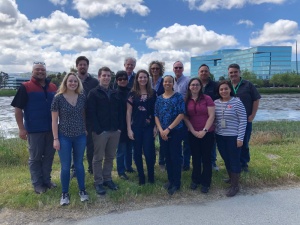
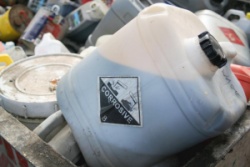

2000 Alameda de las Pulgas, Suite 100 San Mateo, CA 94403
650-372-6200
Like snowflakes, no two CUPA programs are identical. In previous profiles we have looked at Calaveras, Sacramento, San Francisco and Orange Counties, each unique in their own way. Nestled between the bustling urban hub of San Francisco and Santa Clara County, home of Silicon Valley and all that goes with it, San Mateo is the quiet neighbor in the middle. Founded in 1856 and one of the original 18 counties in California, San Mateo County has always been a pioneer. The third smallest county in the state geographically, it lays claim to some of the most spectacular natural beauty anywhere. The contrast between the urban 101 industrial corridor and the serene coast side is stunning. San Mateo is home to San Francisco International airport and just a few miles away lies Crystal Springs reservoir, a large protected open space that serves as the water supply for most of the Peninsula and the city of San Francisco. A short drive over the hill takes you to some of the most pristine and breathtaking coastline that California has to offer, check it out at the Fitzgerald Marine Reserve, then drive down the coast through vast farmlands with artichokes, flowers, berries and more, truly the rural side of the hill.
Since the inception of the Unified Program every county in California has seen changes in the makeup of their regulated community but none more dramatic than San Mateo County. In the 50s and 60s the County was heavily industrialized, home to Bethlehem Steel, Fuller Paints, dozens of plating shops, numerous defense contractors and research facilities like Stanford Research Institute (SRI) and Stanford Linear Accelerator (SLAC). The reminders of their industrial past remain prominent, San Bruno Mountain still sports the message South San Francisco the Industrial City even though it is now the Biotech Capital of California and home to several Biotech giants and dozens of smaller biotech startups. Instead of manufacturing facilities there are now small pop up labs that come and go requiring the CUPA to inspect, educate and provide closure to this dynamic industry. In the other parts of the County, heavy manufacturing has been replaced by social media, internet and gaming mainstays like Facebook, Google, YouTube and Electronic Arts, requiring changes to the CUPAs approach and staff training as these facilities dont generate the volume or types of wastes associated with previous regulated businesses. This ability to adapt to changes is one key to this CUPAs success.
To get some insight, we caught up with Marjorie Terrell, the CUPA Manager for San Mateo County. Marjorie has been with San Mateo County for 13 years. A Stanford graduate, Marjorie spent four years with the city of Minneapolis Environmental Services Division, so she has seen how it is done elsewhere. Like California, Minnesota is a very environmentally conscientious state, allowing Marjorie to apply the knowledge gained early in her career to the San Mateo County CUPA program. Her education and experience have given her a unique perspective and prepared her for the challenges the CUPA program presents. Marjorie is currently a member of the California CUPA Forum Board and serves as the Boards Treasurer and CUPA Conference Co-Chair.
The San Mateo CUPA program is administered by the countys Environmental Health Division, a division of San Mateo County Health. The Divisions CUPA program has 13 inspectors, one technician plus 2 administrative staff and is the CUPA for the entire county, implementing all of the CUPA programs across the 20 incorporated cities and unincorporated areas, as there are no participating agencies. In addition, the Countys CUPA inspectors perform storm water and waste tire inspections.
The County has a long history in the Unified Program. San Mateo County was the first CUPA certified in California in 1997, developed the model application used by many current CUPAs, has hosted the annual training conference more than any other county and was a founding member of the California CUPA Forum.
The evolution of the CUPA program and the change from hardcopy inspections to a paperless world has been a challenge for every CUPA. Marjorie looks on the bright side of this transition and the ability to get timely and accurate data in the electronic world. The data has shown that all of the outreach, education, inspections and enforcement have significantly improved compliance, reducing the number of illegal disposal incidents and emergency response calls. The method used to measure improved compliance tracks specific violations and the time it takes for the violation to be corrected. The data has shown steady improvement and validates the CUPAs efforts, after all compliance is the goal and education is the most effective tool.
Speaking of emergency response, way back in 1985 when the Business Program was just getting started, it was promoted as an effective way to provide information to first responders on the inherent hazards a facility may pose. In reality, that information was hard to get to responders in a timely manner and more often than not that information sat in a file cabinet or a box in someones office. San Mateo has rolled out a program that works in concert with their local portal that provides responders on scene access to vital contact information, inventory and site maps for facilities. This is accomplished using the HazTracker application and provides access via smartphones and computers. The next phase is to integrate this with the new Computer Aided Dispatch system the county is launching which will flag facilities regulated by the CUPA program. This truly is an improvement that may be lifesaving and has been a long time coming and another benefit of the new paperless world.
Always a topic of debate, the local portal has been a valuable tool for San Mateo County. The portal has improved customer service because it allows the inspector to assist operators with submissions, sends reminder e-mails to facilities with overdue business plan submissions, and provides information to first responders. In the second half of 2019, the portal will be launching a compliance module which will enable facilities to see their compliance status, view their inspections, and submit compliance verification documents. Like everything new, it has taken time and effort to develop; but in the end, the local portal is helping San Mateo facilities comply with the ever-increasing requirements.
San Mateo has demonstrated that the ability to adapt to changes in industry types, staff, data handling, outreach and enforcement are central to the Unified Program's success. The Unified Program needs leaders like Marjorie to take the program to the next level and into the ever changing future. Marjorie leads a team that she calls the best in the state because every member has unique strengths that complement the others creating a regulatory program that works with industry to make San Mateo County a great place to live, work, and play. While some of the neighboring jurisdictions may pay a little more or have shorter commutes, the positive attitude, job dedication and drive for innovation exhibited by this CUPA team keeps them together. They are able to work together cohesively and seamlessly just like the Unified Program was designed - consolidated, coordinated and consistent and with leaders that continue to demonstrate the pioneer spirit, blazing new trails and leading the way.
Santa Clara County - A CUPA in a Valley of Silicon
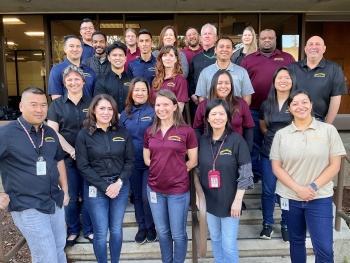

1555 Berger Drive Suite 300, San Jose, CA 95112
(408) 918-3400
Originally a mostly agricultural area with numerous orchards, it was the fruit and seed capital of California in its early years. In the 1940s and 50s many large industries migrated to the area, attracted by the mild climate and access to transportation and shipping hubs. The County has gone through changes, from their early agricultural roots to manufacturing after World War II and is now home to a mix of thousands of high-tech businesses and unique facilities like Stanford University, NASA/Moffett Field, Tesla, Rivian, Apple, and Google. Today, the County is a major employment center for the region, providing more than a quarter of all jobs in the Bay Area while still retaining an agricultural presence on approximately 25,000 acres of farmland, mostly in the southern and eastern portions of the County. It has a wide diversity of cultures and backgrounds. It continues to attract people from all over the world for its technology innovation opportunities. The County is home to minor league baseball, a NHL hockey team, professional soccer (mens and womans) and football, numerous parks, museums, amusement parks, entertainment venues and three major universities - Stanford University, Santa Clara University and San Jose State University.
I was able to catch up with Jennifer Kaahaaina, Joanne Tracey, and Mickey Pierce with the Hazardous Material Compliance Division (HMCD), part of the Countys Department of Environmental Health. HMCDs Hazardous Materials Program serves as the CUPA in 12 of the 15 cities in Santa Clara County, with the cities of Santa Clara, Gilroy, and Sunnyvale operating as their own CUPAs. The cities of Palo Alto, Mountain View are Participating Agencies and Santa Clara County Fire is a PA within Los Gatos, Campbell, and Cupertino. Each agency administers a subset of the Unified Program elements in their cities. The Hazardous Materials Program implements the remaining programs in those five cities and all Unified Program elements in seven cities. HMCD is also home to the Site Mitigation Program and a Lead Safe Homes Program. HMCD has a total staff of 34 with 27 assigned to the CUPA program.
Before the establishment of the Unified program in 1993, there were few regulatory structures in place for hazardous materials. In 1983, the County passed a Hazardous Materials Storage Ordinance, the first of its kind in the state. In 1990, the County passed a Toxic Gas Ordinance, another first. In such a densely populated urban area, these ordinances helped to improve the public health and safety significantly, reducing potential releases and industrial accidents during the peak of technology development. Prior to implementing the Unified Program, the County was also a MOU County, implementing the hazardous waste program for and with DTSC since 1987. Trailblazers in many ways, in 1994, member agencies of the Santa Clara County Fire Chiefs Hazardous Materials Subcommittee and Santa Clara County Department of Environmental Health (DEH) also established Unidocs (www.unidocs.org) as a process to standardize many of the forms, guidelines and procedures within the county related to the management of hazardous materials and hazardous wastes. In 1999, the Unidocs Hazardous Materials Online Inventory Project offered significant benefits to business, industry and local agency users, including electronic submittals, a large chemical database with fire hazard classifications, easy data transfer, the ability to upload site maps and facility maps for emergency response purposes, and the ability to generate a variety of reports. The reporting portion of Unidocs was subsequently used by Cal/EPA as a model for developing the state-wide California Environmental Reporting System (CERS) website. Collaboration and communication between agencies and jurisdictions serve to ensure that the community is a healthier and safer place. The County has gone through changes from their early agricultural roots to manufacturing after World War II and now is home to thousands of high-tech and technology innovation businesses.
In 1993, when SB 1082 established the Unified Program, the Countys experience in environmental regulation served them well and made the transition to becoming a CUPA more accessible. In a County this large with four CUPA agencies and three Participating Agencies, there are bound to be inevitable changes. The City of San Jose, a former Participating Agency, elected to relinquish their Unified Program responsibilities in 2011. That meant that the HMCD would have to absorb their programs, namely the UST and Business Plan programs. San Jose has a population of one million, so this was no small task. Participating Agency responsibilities in the cities of Morgan Hill and Milpitas were also absorbed by the County in 2013 and 2018, respectively.
Ultimately, the rapid program growth associated with assuming San Joses Unified Program responsibilities provided the incentive for the County to go paperless and digitize all of their historic files. This and the early adoption of an electronic violation library and field inspection system certainly helped with the transition to CERS and a nearly paperless office.
Things were going smoothly in 2020 when the pandemic hit. Like most agencies, they halted operations for a period and staff worked remotely. UST inspections were the first to return since they are performed outdoors, making social distancing possible. They were still dealing with the pandemic in August of 2020 when the SCU Lightning Complex wildfires ignited. When you think of wildfires, rural areas are usually what come to mind, not an urban county of two million. The SCU Lightning Complex impacted six counties and is the fourth largest wildfire ever in California, burning nearly 400,000 acres and destroying 222 structures. Staff were diverted again to assist property owners with evaluation and clean up. HMCD is still trying to get back to business as usual.
Santa Clara County is an excellent model of how the Unified Program can work successfully, with seven different Unified Program Agencies coordinating, consolidating, and ensuring the consistent application of six regulatory programs in one of the most diverse industrial areas in the nation. Achieving their mission and accomplishing goals requires frequent communication and meetings between the implementing agencies in the County. They also collaborate with industry and stress education to help operators achieve compliance. It is that education-first mentality that many Unified Program agencies use combined with the inspectors interpersonal skills that make the difference. So next time you are in this high-tech hub of California, swing by the headquarters of Apple, Hewlett-Packard, Google or Tesla and rest assured that the HMCD staff are hard at work protecting the people and the environment.
Santa Fe Springs City Fire Rescue Certified Unified Program Agency (CUPA)
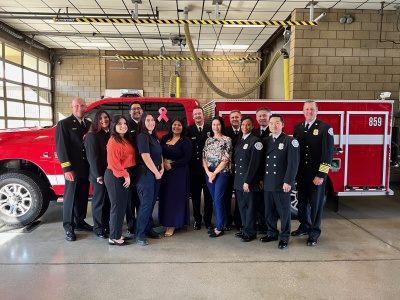

11300 Greenstone Avenue Santa Fe Springs, CA 90670
(562) 944-9713
Santa Fe Springs an Industrial Strength City
This CUPA Profile takes to Santa Fe Springs, one of the Gateway cities of Southeast Los Angeles County. Unlike its densely populated neighboring cities, Santa Fe Springs is more industrialized and always has been. In 1920s and 30s it was a major oil producer, pumping out more the 400 million barrels of oil. The oil industry has been replaced today by a variety of light industry. The city is home to defense contractors, aerospace, auto manufacturing, food processing and much more. In fact, packed into the 8.9 square miles it covers there are more than 1200 CUPA permitted facilities.In an area as densely populated as LA County, CUPA agencies play a vital role in keeping communities safer and helping businesses understand regulations, which improves compliance. I was able to catch up with Eric Scott to learn a little about how this CUPA gets it done. The Department of Fire- Rescue administers the CUPA program for the city, staffed with an Environmental Program Manager, Environmental Protection Specialist and four inspectors. When the CUPA program was created back in the mid 1990s to coordinate, consolidate and make consistent six specific regulatory programs statewide, the goal was to lessen the impact on businesses with a more efficient inspection process. That is exactly what they have done in Santa Fe Springs, the Department of Fire-Rescue has 1200 CUPA facilities in their inventory, but that is not all they do. The inspectors here also perform fire code, industrial waste and stormwater inspections, now that is consolidation. It also means they have an additional 500 facilities they inspect for those programs. Performing the fire code inspection is particularly helpful since inspectors can resolve some significant safety issues that are outside the CUPA authority, like blocked exits and chemical storage requirements. All this helps make it safer for the employees and the community.
The CUPA program is a complex regulatory program that requires annual training, adding the Fire Code, industrial waste and stormwater means even more ongoing training. Like most CUPA agencies Santa Fe Springs gets most of their CUPA training at the annual CUPA conference. The conference was held in person this year after a three-year pandemic interruption, in person training is more effective for many students and allows for valuable student interaction and networking. Those added programs increase training for each inspector but also makes the inspection process more efficient, lessening the impact on business, reducing travel and improving community safety. All that training and expertise make those inspectors a valuable commodity and the investment in training and professional growth is all part of the CUPA program. CUPA staff inspect a wide variety of unique businesses, one of the best things about being an inspector is that you see everything from aircraft, solar panel and computer chip manufacturers, which employ some very high-tech cutting-edge stuff, truly amazing.
A key component of the success here is the emphasis on helping operators understand the requirements and developing a good relationship with those operators, all leading to a higher level of compliance. That is why they hold annual training for Small Quantity Generators (SQGs) on the requirements for Hazardous Waste handling, operators that attend the training get a partial rebate on their fees as an incentive. Another thing they do that helps them identify new businesses is to monitor new business licenses that are processed and review their statement of use, allowing them to then flag any that intend to store or treat chemicals getting them in the CUPA program from the start.
Like everyone in the world the pandemic interrupted normal operations, they were able to operate through it with the office at half staffing and inspectors doing field inspections. inspectors were able to catch up on CERS submittals. They are back to normal now and although they work hard to help operators comply there is always the recalcitrant business that just does not and needs an extra nudge, they use the Administrative Enforcement Orders (AEO) to provide that nudge. They may not have to use it often but when needed the AEO process is extremely effective.
The inspection staff here have a full palate when it comes to inspection duties but there is always a little more, they may be called upon to assist response personnel when there is a chemical emergency, respond to an oil spill or abandoned waste. Then there is always the new and developing industries. The old oil producing fields here are now being used for a startup hydrogen fueling station for semi-trucks and also potentially for a lithium battery storage facility. Lithium batteries have become a bit of an issue with their propensity to spontaneously combust, so inspectors, responders and regulators are all still learning about them.
Santa Fe Springs is a great place to live, work or visit and the staff of the Department of Fire -Rescue makes it safer for all of that. So, the next time you are passing through this city of industry rest assured the workers, residents and visitors are safer because of the hard work the CUPA staff are doing each and every day.
Santa Rosa Fire Department CUPA
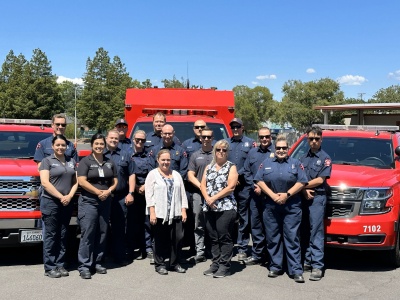

2373 Circadian Way, Santa Rosa, CA 95407
(707) 543-3500
The Tubbs fire in October of 2017 swept through the city driven by extremely strong winds, destroying almost 3,000 structures in the city. The fire was part of what was known as the Northern California firestorm which had fires burning in eight northern counties simultaneously, killing 22 people in Sonoma County and 9 Santa Rosa residents. That firestorm, along with the Glass Fire in 2020, changed the landscape, initially devoting staff and resources to rebuilding efforts, which requires an assessment of every burned structure to ensure all the hazardous materials are removed while assisting owners in navigating the clean up and rebuild process. The next step was to have staff focus on fire prevention, vegetation management, community education, and preparedness. Like many communities affected by wildfires, the Department shared its experience with other areas impacted by fire, most recently reaching out to Lahaina, Maui HI to offer assistance and peer support. According to the CUPA Manager and Assistant Fire Marshal Kemplen Robbins, SRFD has approximately 700 facilities in their CUPA program, which is a mix of manufacturing, industry, small business, UST sites, and surprisingly not one Cal ARP facility. Beer, spirits, and wine is a big industry in the city, which uses carbon dioxide and nitrogen in their production processes. While these may seem like harmless chemicals, both are asphyxiants. That is why they require a permit and training for facility operators which will ultimately make the operation safer for the public, employees, and first responders. They also have a thriving cannabis industry including dispensaries, cultivation, and extraction. Regulating and inspecting these facilities, while permitting and training responders on their operations, fosters a positive working relationship with this emerging industry, ultimately enhancing safety for all parties involved. SRFD currently has four dedicated inspectors to implement the Unified Program. In addition to the CUPA inspections they also perform Fire Code inspections. The SRFD prevention bureau prioritizes versatility and training, and their staff are also trained Fire investigators and Hazardous Materials Technicians and Specialists. CUPA staff typically responds with the departments Type 2 Hazmat team, filling various roles during the incident, working with facility owners and operators and overseeing cleanup and enforcement. On a recent call, SRFD deployed a drone to go into the rear of a trailer where chemicals were spilled, enabling the drone pilot to safely read the labels and identify the chemicals involved from a safe distance.
In my opinion, that is the essence of why CUPA was created, to be consolidated, coordinated and consistent, maximizing efficiency and reducing the impact on the business community. This is a large city, but it still retains that small town feel and the inspectors have a lot of connections, relying on networking and always centering the community first. Educating operators and residents is the first step, whether it is informing waste generators about their cradle-to-grave responsibility or homeowners on proper disposal of unwanted household chemicals. Operators frequently need assistance with entering and updating their information in the California Environmental Reporting System (CERS), which can be a challenge for some. That is why they have a kiosk, as well as a technician to assist with the process to help business comply and in the end make Santa Rosa safer.
Education and outreach should be the initial approach taken by every CUPA, unfortunately it does not work in all cases. Uncooperative and recalcitrant violators sometimes need that extra nudge of enforcement to get them to comply. They use the Administrative Enforcement Order (AEO) process for Class one violations. The CUPA may also refer cases to the District Attorney for prosecution. Enforcement is a last resort, but a necessary component of every successful regulatory program.
If the opportunity presents to visit California's premier wine country city, you can be certain the staff of Santa Rosa Fire Departments CUPA are on the job and multi-tasking to make the community safer and healthier for all that live or visit Santa Rosa.
SFDPH - Hazardous Materials and Waste Program - San Francisco



1390 Market Street, Suite 210, San Francisco, CA 94102
415-252-3900
San Francisco is one of the most iconic cities in the USA, it has been called the "City that knows how" or "Bagdad by the Bay" but never Frisco. I have been a lifelong resident of the Bay Area and San Francisco has always just been known as "The City" to me, just look at the jerseys of the Golden State Warriors. The Citys colorful history extends from the rough and tumble days of the Barbary Coast with its Shanghaied Sailors and the gold rush era to the 1906 earthquake and fire that would remake the city. Todays San Francisco is far different from the rugged port city run by longshoreman or the Haight Asbury hippies and the flower power movement of the 60s. Todays San Francisco is one of the most desirable yet expensive places to live in the world, boasting a very diverse community with all of the associated urban issues. This presents an enormous challenge for regulatory and public health professionals that must adapt to a rapidly changing world. The City is unique in many ways and this includes being the only CUPA that is both the City and County. The City & County of San Francisco (CCSF) is the CUPA for San Francisco. The Department of Public Health (DPH)-Environmental Health Branch (EHB) is the lead agency within the CCSF for implementing CUPA requirements. Within the EHB, the Hazardous Materials and Waste Program (HMWP) implements the CUPA requirements and is one of seventeen programs administered by EHB. I recently had an opportunity to sit down with the HMWP Program Manager, Paula Stewart, at the 2018 annual CUPA Training Conference and got a firsthand account of how life is in the big city.
EHBs mission is to, "Improve Environments, Protect Health and Promote Equity." In that effort, the Citys CUPA regulates approximately 2500 facilities with 11 inspectors, two program leads, one public health technician, 2 administrative support staff and a manager. Inspectors are assigned to specific districts and handle all Unified program elements as well as two non CUPA programs, Medical Waste and Chlorofluorocarbon Recovery and Recycling. Over the years the types of industry in the city have changed, many of the longtime heavy industry types, like ironworks, plating shops, woodworking and manufacturing have left the city. These industries have been replaced by a wave of biotechnology, research facilities, hi-tech industries, educational institutions, urgent care facilities, microbreweries/brewpubs, gourmet food and beverage facilities and cryo spas where liquid nitrogen and dry ice may be commonly stored for made to order ice-cream, specialty beverages and spa treatments. Occupying 49 square miles and with nowhere to go but up, high-rise buildings have become a large part of this CUPAs inventory. They have 468 buildings over 400 feet tall packed into the area with 100 more under construction or planned, no urban sprawl here. The unique makeup of the city, with mixed residential and industry everywhere complicates the CUPAs mandate to protect the public health and safety. That is one reason that DPH regulates all facilities with an aggregate total of 55 gallons of hazardous materials, counting all containers one gallon or larger.
As a manager that started her career in 1992 as a district inspector Paula has seen both pre CUPA and post CUPA programs and appreciates the organization, tools and support she receives as a CUPA. She mentioned such highlights as:
The availability of training which has gotten increasingly better with the centerpiece being the annual CUPA Conference augmented by Technical Advisory Groups and CUPA Forum Board sponsored trainings such as UST Inspector Training, Tiered Permitting, McCoys Hazardous Waste Generator, Train the Trainer and the recently completed cannabis training for inspectors. Sharing these training opportunities is cost effective, beneficial to new and seasoned inspectors, and provides opportunities for staff of all experience levels to share experiences and network.
The enforcement tools that are now available like the Administrative Enforcement Orders help streamline enforcement which helps as a deterrent to other businesses, validates the inspectors efforts and facilitates fair and equitable administration of CUPA program requirements.
The regional, program specific Technical Advisory Groups and CUPA Forum Board meetings are a great way of sharing information and problem solving as well as learning about what neighboring agencies are doing, emerging trends and new legislation.
CERS presents a new challenge, one that will take some time and some changes to overcome but it will ultimately help both regulators and industry. The introduction of field inspection tablets to eliminate paper and improve data input will ultimately improve the CUPAs implementation of CERS.
San Francisco has always been known for it's innovation and the CUPA program is no exception, here are a couple of examples of their trendsetting ways:
The Green Business program requires participants to comply with a checklist of specific items that take them well above the compliance baseline. This helps give residents some peace of mind knowing that the business is both conscientious and uses more environmentally friendly products which are typically less hazardous. The benefit for the business is a designation as "Clean & Green" with associated outreach which can help in an environmentally aware city where industry and residential communities are located in close proximity. The benefit for the CUPA is a subset of facilities setting the standard by going beyond compliance and making the inspectors job easier and more rewarding.
In 2016, the CUPA established a Registration and Compliance Assistance unit. This unit field screens industry sectors to identify businesses likely to be regulated by the CUPA and helps new businesses and public agencies comply with the complex regulations in the CUPA programs. They help businesses set up a CERS account, explain the specific program requirements and operate similar to a consultant in assisting businesses and public agencies to achieve compliance. Compliance is always the ultimate goal and that is why outreach and compliance assistance is a program priority in fact it is a directive from the mayors office. This unit has helped improve business compliance and helped to get City Departments and sister agencies into compliance. Public agencies should always set the standard for compliance but getting them there can take some effort and this compliance team has made a difference.
The scent of marijuana has long been wafting through music venues like the legendary Fillmore Auditorium and Winterland or the city streets like, well just pick one. As Californias newest industry, cannabis cultivation, processing and associated industries are estimated to generate 5 to 7 billion dollars for the state economy. In 2015 The City established an Office of Cannabis, allowing only indoor grows, currently there are forty growers registered with the office. They also have 56 processing facilities that extract the essential oils from cannabis. These facilities use a variety of solvents from butane, carbon dioxide, alcohol and ice water, each with their own inherent hazards. Various EHB programs including the CUPA work closely with the Office of Cannabis, Fire and Planning to permit and inspect these sites. CUPAs are still trying to find their role in this emerging industry and learning what works, new trends, success stories and mistakes helps to make us all better, so please share as you learn.
Like every employer the City is always trying to attract the best and brightest people for their CUPA program. San Francisco has started an intern program that allows them to bring in trainees from local colleges to work on a specific project. As part of this program the agency must provide training to the intern that would qualify them to work in the CUPA program. The intern receives training in all six CUPA program elements including ICC and APSA certifications in exchange for the work they do on a project. This is a two year program that is mutually beneficial allowing the intern to see if they would like the job and enabling the agency to learn about a potential permanent employee.
San Francisco is something different to everybody from a tourist mecca, a sanctuary city or a regional cultural hub, all of this make it a challenging place to implement a regulatory program like the Unified program. In the end we all do the same job but have different challenges and whether you are in Siskiyou county or San Diego county the regulations are the same. The City is a great place to live, work, play and visit and EHBs vision is to "Make San Francisco the Healthiest Place on Earth". They are definitely well on their way in part due to the work of their CUPA staff.
Stanislaus County Department of Environmental Resources
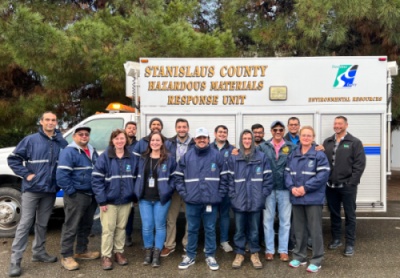

3800 Cornucopia Way, Suite C, Modesto, CA 95358
209-525-6700
Located in the heart of the Central Valley, Stanislaus County stretches from the Sierra foothills in the east to the Coastal Range overlooking San Jose and the South Bay to the west. Manufacturing and warehousing-distribution are its top two industries. However, Stanislaus is still close to its agriculture and food processing heritage due to three key features: the Mediterranean climate of dry summers; three major rivers that bring water and nutrient-rich volcanic sediment from the Sierras; and almonds being the primary agricultural product. An aerial view makes it easy to see that most of the industrial, commercial, and residential real estate hugs the freeways and centers on the county seat of Modesto. Most of Stanislaus population is just over half a million people. While there is a lot going on in Stanislaus County in the variety of dining options, outdoor activities, or even a rodeo or three, Stanislaus really plays a supporting role from Californias economic backfield.
CUPA, Hazardous Materials, and the Department of Environmental Resources
To get the full scoop on the local CUPA here, we went to Mr. Alvin Lal, their CUPA manager since 2019, who has been with County for 15 years and with the CUPA program for the past 10 years. The Stanislaus County CUPA is the Hazardous Materials Division (HMD), part of the Countys Environmental Resources Department of about 85 staff and 11 services areas. The HMD has a staff of 20, including Hazardous Materials Specialists (HMS), Senior HMS, Environmental Technicians, and Environmental Resources Aides. In addition to the five CUPA programs, HMD is responsible for non-CUPA programs such as Site Mitigation, Monitoring Wells, Medical Waste, Household Hazardous Waste Facility, and the 24 hour CountyWide Emergency Response Team. The HMD regulates about 2,500 facilities in Stanislaus County.
Education is our Core
Stanislaus County CUPA prides itself on being business friendly, building a healthy community, and providing effective and efficient delivery of public services through a balance of science, education and environmental regulations. This CUPA knows that outreach and education is the key to compliance from businesses. That is why they have hosted multiple workshops for CalARP, Hazardous Waste Management, and CERS since 2014. This CUPA is also in partnership with Central Valley Chemical Safety Day (CVCSD), where the main emphasis of training is in chemical safety in industry. The events include CUPA programs and regulations, Industry Operator Safety, and extremely hazardous materials, like anhydrous ammonia. The majority of their CalARP sites use ammonia as a refrigerant for food processing, so RETA-certified technicians appreciate the workshops that explain refrigeration systems and vendors that offer demos of new products.
Held at the Stanislaus County Fairgrounds the first Thursday in November each year, it attracts close to 400 participants, including State and Local Regulators and Emergency Responders. Alvin is a member of CVCSD since 2011 and Co-Chaired the committee from 2017 to 2021. Keeping current on the ever-increasing training requirements is a challenge and Stanislaus County CUPA relies on the annual CUPA conference for much of their training needs. They also conduct their own monthly in-house trainings.
Our New Normal: Maximizing Compliance
Like all of us, the pandemic made field work more rigorous, although they did conduct the required UST inspections. Thankfully, they are 90% back to normal, but CUPA staff now spend more time on the computer. Administration of the CUPA program is a challenge even without a pandemic, and there never seems to be enough time. When Alvin stepped into the HMD manager role, he coalesced his priorities of accountability, consistency, and succession planning.
Continuous Improvement and State Evaluations
The triennial CUPA Evaluation is important for continuous improvement of CUPA functions and it deserves time and attention, even though staff is already spread thin. Alvin would like to see the evaluation be more of a partnership and with more tools available to assist CUPA agencies. It would be helpful if the State Boards, Departments, and Offices (BDOs) conducted workshops either live or virtually to help prepare CUPAs for evaluations or had a consultation unit like Cal OSHA for CUPA agencies to get help to resolve issues before receiving a deficiency. Streamlining the process from evaluation to progress reports to make it more of a cooperative effort might be more effective. The evaluations sometimes get sidetracked on details and lose sight of the big picture of overall CUPA Program compliance. Also beneficial to CUPA staff would be greater consistency among and within BDO evaluators, such as training evaluators. Yet at the same time, familiarity with local program issues might also improve practicality and relevance.
At our Heart
The Stanislaus County CUPA is a shining example of why local programs are successful; it is because they work together with the regulated businesses and contribute to their community. They strive to build their internal capability as regulators, they are proud of what they do, and most importantly, they are involved. Alvin says We are all Stanislaus County HazMat: one community, one team, one mission, and one vision to serve the public. That is why he also volunteered to be the Cal CUPA Forum Secretary; to learn more about issues and upcoming news about CUPA topics. Sounds familiar; locals do more work with fewer resources and they always get involved to help improve the program.
Tulare County Environmental Health Services
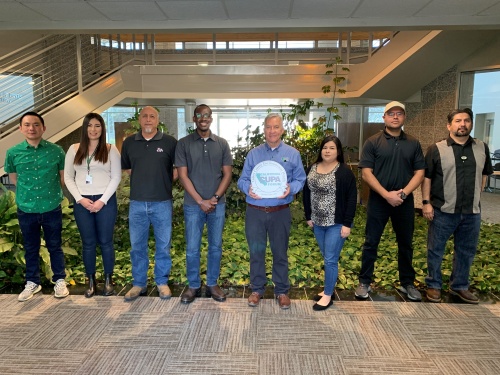
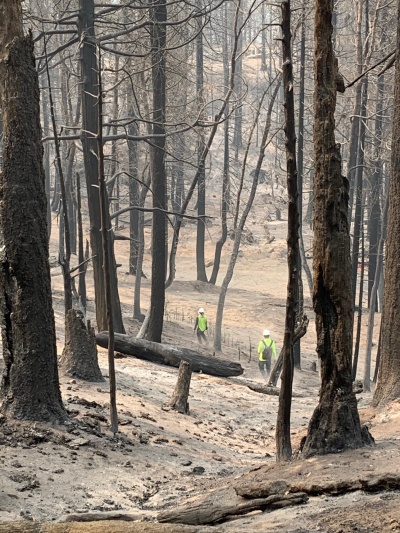

5957 S Mooney Blvd, Visalia CA 93277
559-624-7400
California is one of the most diverse states and everyone of its 58 counties is unique. Stretching from San Diego to Shasta and Monterey to Mono, California has It all from beautiful beaches to arid deserts and majestic mountains. Our CUPA profiles have featured many of these and this time we are stopping in at Tulare County. Located in the heart of the Central Valley and with just under 500,000 residents the County stretches from lush croplands to the majestic Sierra Nevada mountains. Tulare County offers a little bit of everything, but their biggest asset is agriculture. It is consistently one of the most productive agricultural counties in the U.S. with dairy as the most productive commodity followed by oranges and grapes, truly Americas breadbasket.
The Tulare County Environmental Health Services is the CUPA for the entire County and was certified in 1997. I was able to get Joel Martens to sit down and tell me all about their CUPA. Joel has been the CUPA program supervisor for more than 20 years, so he knows what is going on, in addition Joel is a past Chair of the CUPA Forum board and was the Issue Coordinator for the Hazardous Materials Business Plan Technical Advisory Group for 15 years.
The Tulare County CUPA implements all of the CUPA programs countywide and has eight inspectors, one office assistant and a Program Manager. Tulare exemplifies why the CUPA program has been such a success statewide. They have been able to consistently meet the mandated inspection frequencies and have achieved an extremely high rate of compliance. Their success is directly attributable to their approach which stresses outreach and education. Their UST owners and operators also tend to be less sophisticated. Many are relatively recent immigrants for whom ownership of a convenience store or gas station is their path to the American dream. As Joel says creating real relationships with these clients is vital to helping them stay in compliance. It is hard enough for regulators to stay abreast of the many changes in this complicated mix of regulatory programs let alone folks trying to make a living, raise a family and still live life.
Like many CUPA agencies Tulare has to compete for staff with agencies around the state that pay more or have more opportunities for advancement. Joel feels that they have been fortunate to have a low turnover rate for staff. This is primarily because they have been able to hire people that either live in the area already or want to live in a place where they can afford to own a home and raise a family. Whether it is new or existing staff training them in all elements and then maintaining that knowledge is a challenge for every CUPA. Tulare has been able to send their staff to the CUPA conference every year which helps them meet all required continuing education, OSHA and ICC requirements. Like many counties inspectors in Tulare are generalists in that they do inspections in all program elements. That is what makes a CUPA career so rewarding and challenging but also requires a lot of technical training. Joel would like to see some sampling and laboratory support that were discontinued and enforcement resources like the Regional Task Force meeting that was coordinated by the U.S. Attorney. These were all helpful resources in the past and resources that counties especially midsized and smaller counties typically cannot afford.
Since the inception of the CUPA program changes and advances in technology have been constant. Tulare has made significant changes in several areas that have made a difference. One of the changes that has aided first responders is the use of the HAZTRAKR application. This application lets first responders use their smartphone to access the most updated information including chemical inventories, facility maps and contact information. As the Business Plan legislation intended way back in 1986 when enacted this application protects first responders by giving them all the information they need when responding. Tulare also use an e-Compliance portal and CERS to collect business data. This allows easier input and access for business and also ensures the data in both systems is correct. Inspectors also have been using tablets in the field when performing inspections allowing easy access to facility information and eliminating some data entry. Lastly, they have utilized ESRI GIS which is able to provide detailed maps of facilities in the county and allows CUPA staff to quickly access property records, zoning requirements and pertinent facility information when preparing for an inspection. All these technological improvements help staff work more efficiently and improves the public and responder safety.
The Tulare CUPA like every CUPA wants to help business in their community to comply and thrive. Joel sees opportunities for establishing the frequency and priority of program routine inspections based on relative risk and community impact rather the existing mandated frequencies. Most rural CUPAs are going to be limited as to staffing and the ability to fully support their programs through fee revenue alone. Ideas such as the Regulatory Performance Initiative may provide for more efficient implementation by prioritizing local resources to activities that provide the most bang for the buck, that is, those that have the greatest environmental and public health benefits. It doesn't seem to make sense to inspect all hazardous material handlers and waste generators at the same frequency, regardless of risk.
Like everyone in the nation the pandemic has reduced field work and productivity although UST inspections are taking place since they can be done while social distancing. Life is slowly coming back to normal and so is this CUPA. Tulare is a shining example of the diversity, ingenuity and connection to community that makes the CUPA program so successful and resilient. So next time you are passing through the Central Valley or maybe even when you are having that cold glass of milk , know that local staff like Tulare County's staff are hard at work helping local business comply.
Yolo County CUPA
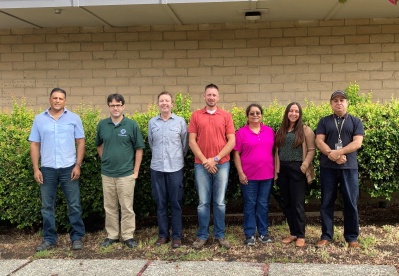

292 West Beamer Street Woodland, CA 95695
530-666-8646
Yolo County, country living in a metro area
The CUPA program is unique to California and was designed to coordinate, consolidate and make consistent the implementation of six specific regulatory programs and was formed with the passage of Senate Bill 1082 back in 1993. After the initial challenges the CUPA program has proven to be extremely successful, there are now 119 agencies in the state working to protect our health and environment. There are 58 counties in California and our CUPA profile this time is on Yolo County which was one of our 27 original counties in 1850 when our state was admitted to the union. Yolo County covers more than 1000 square miles and is located just west and north of Sacramento County, it is part of the greater Sacramento metropolitan area. The county seat is Woodland with its small-town vibe and intrinsic beauty, the largest city is Davis, home to the University of California at Davis. Yolo has a lot to offer from local microbreweries and wineries to the historic towns of Winters and Woodland boasting plenty of fantastic food and entertainment. The best part though is the countryside and the farms with more fresh produce than you would ever need and a wide-open feel that will set you free. I was able to sit down with Moushumi Hasan the Supervising Hazardous Materials Specialist in charge of their CUPA program to find out how they get it done here.
The Yolo County CUPA program is administered by the Environmental Health Division which is part of the Department of Community Services. The Division has a staff of six inspectors to serve approximately 1329 facilities and a population just over 200,000. There are also two Participating agencies that help get it done, the Agricultural Dept regulates about 113 farms and West Sacramento Fire does the Business Plan and Small Quantity Generators for about 46 sites.
The pandemic affected, everyone worldwide and Yolo County was no exception. When the pandemic hit, they closed for about three weeks. Staff worked from home catching up on their CERS entries, reviewing plans and attending training virtually. They were able to keep doing the UST inspections though, since they are all outdoors which made social distancing easier. By May of 2020 they were back out in the field, utilizing all the appropriate public health protocols including hand sanitizing, social distancing, and masks to keep their clients and themselves safe. The Division had already been using tablets to perform inspections, upload data to EnvisionConnect and email inspection reports to the business, minimizing contact and office time while enabling staff to get their work done. Field tablets have come a long way and are improving efficiency in several ways, like the way inspection data is shared by agencies and industry, by providing access to first responders, improving customer service and communication. Here in Yolo County, they have developed a spreadsheet to track all staff training throughout their career, Cal EPA saw it during a recent evaluation and liked it so much it is being used as a statewide model for other agencies. It is that type of innovation and sharing between agencies in the CUPA programs that have help it continually evolve, the annual CUPA Conference is a prime example with thousands of local, state, and federal staff along with their business partners coming together to share information.
Inspections, education, and enforcement are their main CUPA tasks, but Yolo County also provides staff for emergency response to hazardous materials incidents twenty-four seven for anything from oil spills to fentanyl exposures. Multitasking is the norm for local agencies and Yolo County also implements the CalRecycle used tire program that helps keep waste tires out of the environment and properly recycled. They have participated in several used tire amnesty days along with the Central Landfill which allows residents to transport up to 40 tires total per event, these days have been very successful particularly for rural counties.
Fortunately, the county has not seen any wildfires like many counties, but they have stepped up to help other affected counties by send staff via mutual aid to assist with recovery efforts, helping each other is what CUPAs do. The Yolo CUPA is a great example of how the CUPA program should be implemented, it is 95% fee funded and is small enough to be manageable giving inspection staff the opportunity to help each business understand and comply with the constantly changing regulations. Staffing can be a challenge, smaller counties often become the training ground for more urban areas that have higher salaries, recently the Divisions Consumer Protection staff has seen a complete turnover, thankfully they have had success with college graduates that they can train. Training is always a challenge, the annual CUPA conference is a great source for most of the required training and it is also a great place to network and meet state partners and industry leaders. The West Sacramento Fire Department Participating Agency (PA) has sponsored free environmental compliance training courses in past years, for regulated businesses in Yolo County and was supported by the CUPA and presented by a local consultant. Training courses have moved from in-person instruction to online webinars within the past year due to the COVID-19 pandemic, all this was done to educate local businesses and improve compliance.
So, the next time you are headed down I-5 and looking for a unique area to stay try out Yolo County, it is a stones throw from Sacramento International Airport and minutes from the State capital Sacramento with all an urban area has to offer. Yolo county is close to everything yet has the small town and country feel that lets you relax and unwind. When you do visit Yolo just know that the staff at Environmental Health is on the job and this CUPA is helping local business comply and keep the community safe.
Yuba County CUPA
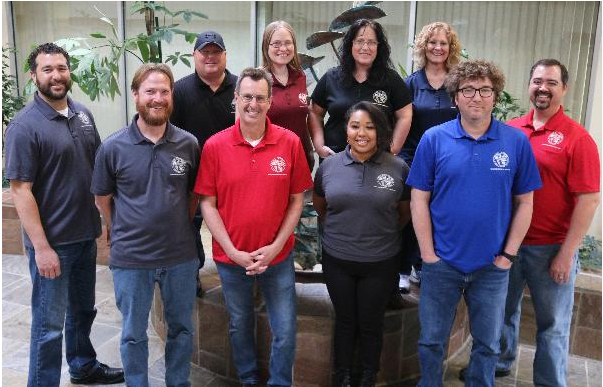
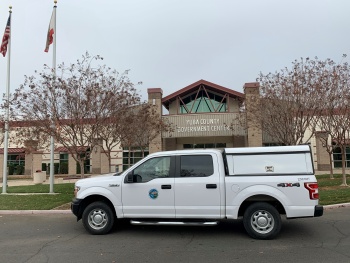
.jpg)
915 8th Street, Suite 123 Marysville, CA 95901
530-749-5450
We wanted to learn a little about the Countys CUPA agency so I ZOOMED into Yuba and had a chance to talk to Clark Pickell the Director of Environmental Health and Gary Cantwell the CUPA Program Supervisor. Clark and Gary have been working together for over 15 years and this CUPA is in good hands. The Yuba County Department of Environmental Health has a staff of ten and is responsible for all of the traditional environmental health programs plus the CUPA regulatory program. The Yuba CUPA has 2 primary staff members and 5 staff certified for USTs and APSA. The inventory includes 532 permitted sites, 40 tanks and 4 Cal ARP facilities. The Yuba CUPA has been a shining example of what the CUPA model is all about providing outreach and education and compliance assistance to local businesses while regularly meeting their annual inspection goals.
Rural CUPA agencies have their own set of challenges with a smaller inventory that is spread out over a larger area than urban CUPAs. The Yuba CUPA is totally fee supported their challenge is following up on their Return to Compliance notifications issued for minor violations. Typically, the facilities actually do comply but many fail to return the notice requiring follow up by the inspector to verify compliance and this takes time. The other drain on resources is enforcement which always takes time, thankfully the Yuba staffs education-based approach has improved compliance and reduced the demand for formal compliance. The California Environmental Reporting System (CERS) has impacted them and although the data collection and tracking is important it does takes staff out of the field, sacrificing some level of public safety. Another challenge for all CUPAs but particularly smaller agencies is the evaluation process. The evaluation process is an important element of the Unified Program intended to improve consistency, coordination and compliance. Unfortunately responding to the evaluation, providing updates and updating the required ordinance and code changes is a drain on valuable staff time that is difficult for these small agencies to absorb, rural agencies are typically pretty lean on administration staff.
Compounding the drain on staff time are the statewide wildfires that have become the new and scary norm. Like many counties Yuba provides staff to assist with evaluation and clean-up of the debris from burned structures. Over each of the past three years Yuba has donated significant staff time to other affected counties. The California CUPA Forum relies on participation from CUPAs statewide and no CUPA is more active than Yuba county. Gary is a member of the current Forum board, a conference planner and former presenter, student day coordinator and the Northern California UST chair. Clark was a longtime CUPA Forum Board member, past Forum Board Chair and is the current CCDEH Region 1 Chair and is on their Haz Mat, I.T. and Emergency response committees. Yuba county has had a member on the CUPA Forum board since 2005 making significant contributions and always communicating the rural county issues. Clark led the effort to develop the Integrated Standardized Checklists that helped so many CUPA agencies. That is exactly what makes the CUPA Forum so unique, CUPA agencies around the state sacrificing time for the greater good. As Clark knows, this participation pays off in training opportunities, funding and also the significant changes that result from the unified approach the Forum makes possible. Together the local agencies have a louder voice and can more effectively bring about change.
All of this statewide activity does pay dividends, the CUPA Forum helps to connect regulators from every CUPA in the state enabling critical networking. Networking allows agencies to share what they learn, provide templates, policies and innovative ideas. Yuba County has often relied on their neighbor to the South or as Clark said their Big brother. As a large urban CUPA Sacramento County has more staff and has always been there to help whether its to provide forms, plans or ideas. Recently Gary went to Colusa County to help them with new inspector training, this was made possible by the CUPA Forum Trust, check it out if you are a rural county that needs help at https://calcupa.org/rural-training-assistance/index.html . This is what CUPAs are all about, helping each other whether it is during emergencies or day to day issues, big and small agencies lending a hand to each other to improve statewide implementation of a complicated program.
One of the major reasons that the CUPA regulatory model is so successful is the connection local agencies have to the community. Local staff are a part of the community and they know what works. In addition to their CUPA Forum and CCDEH activity, this dynamic duo also meet regularly with their businesses, are on the Yuba Sutter Hazardous Materials Response team Operations committee and chair the region III LEPC. The staff at Yuba county exemplify commitment to their community, Gary is a graduate of Chico State and still goes back to let students know that Health inspectors are also the Haz Mat regulators. Gary also spreads the word at Junior Colleges and high schools in an effort to get the best young minds to consider the Unified Program and Environmental Health as a career choice. Obviously this explains why everyone in the office the day we spoke was a Chico State graduate, attracting locally based staff with deep connections to the community is a key to this CUPAs success.
Yuba County may be small geographically but they have had large voice in helping shape the CUPA program statewide. Clark and Gary care about the community they live in and constantly strive to improve the way the CUPA program is delivered. So next time you are in Sacramento take a drive north and experience what Yuba County has to offer, you will not be disappointed.



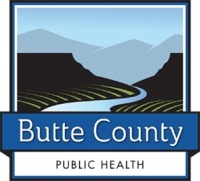

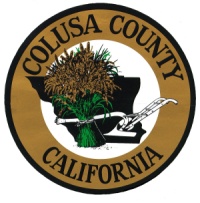
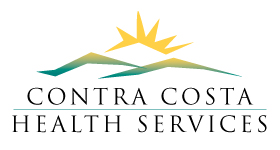

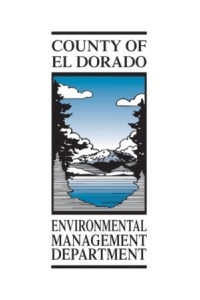
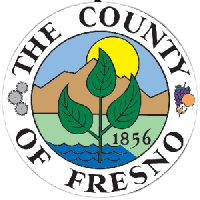

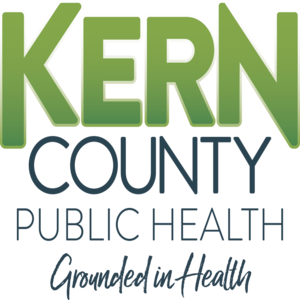
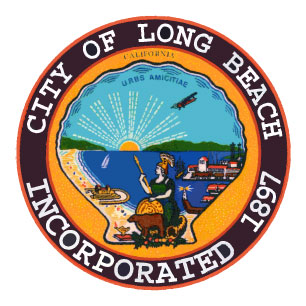
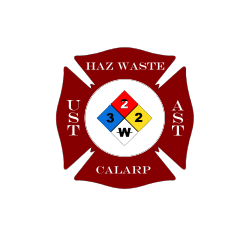
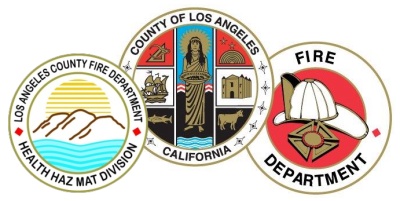



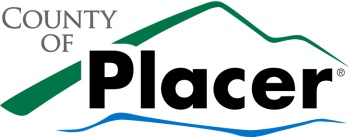
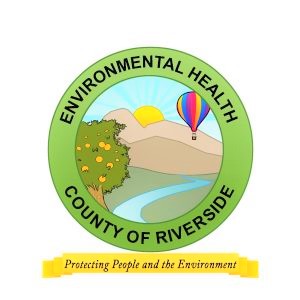






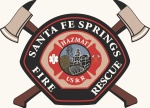
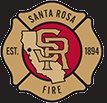


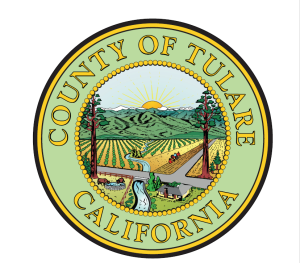
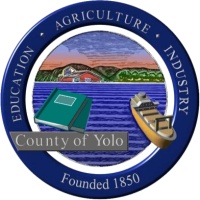
.jpg)